‘This is what a community should be’: My Sister’s Closet event features local art, collective spirit, women’s voices
My Sister’s Closet marked a milestone on Tuesday (June 24) with a festive ribbon-cutting and community celebration at its future location. The event featured viewings of the new facility, an unveiling of community art, and remarks from Bloomington mayor Kerry Thomson.
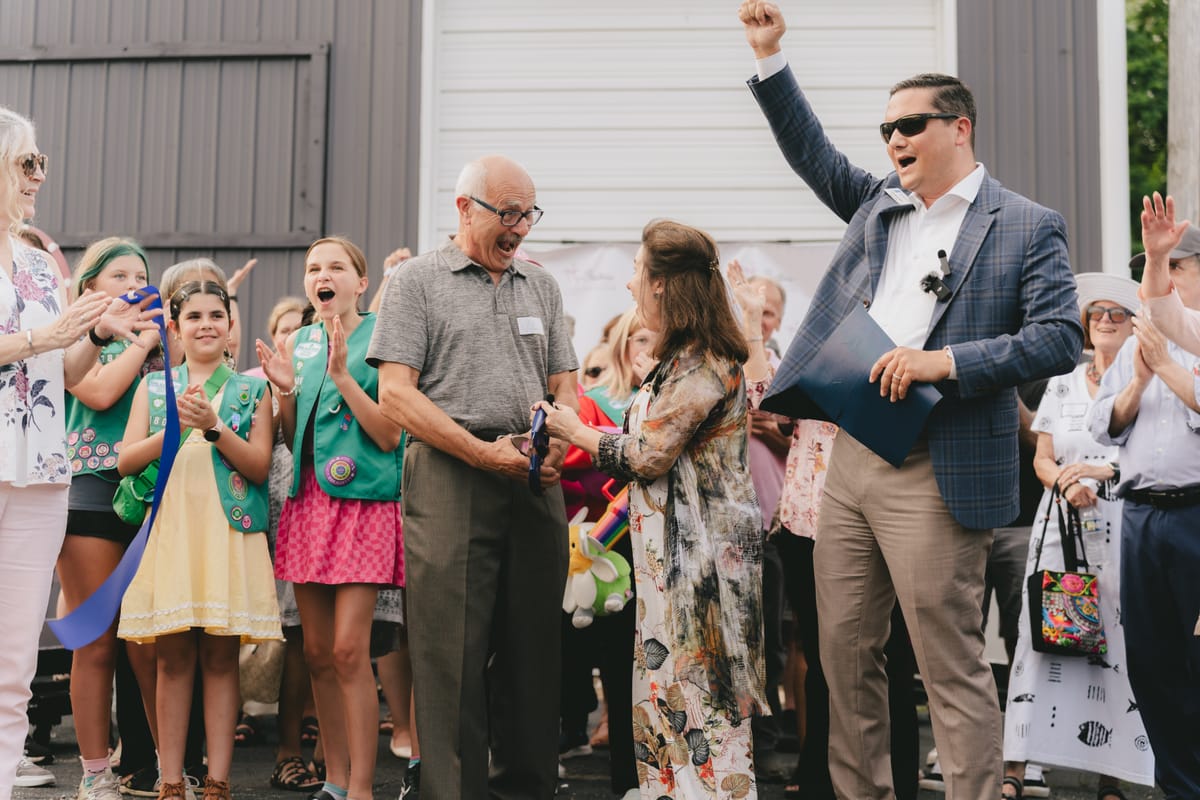
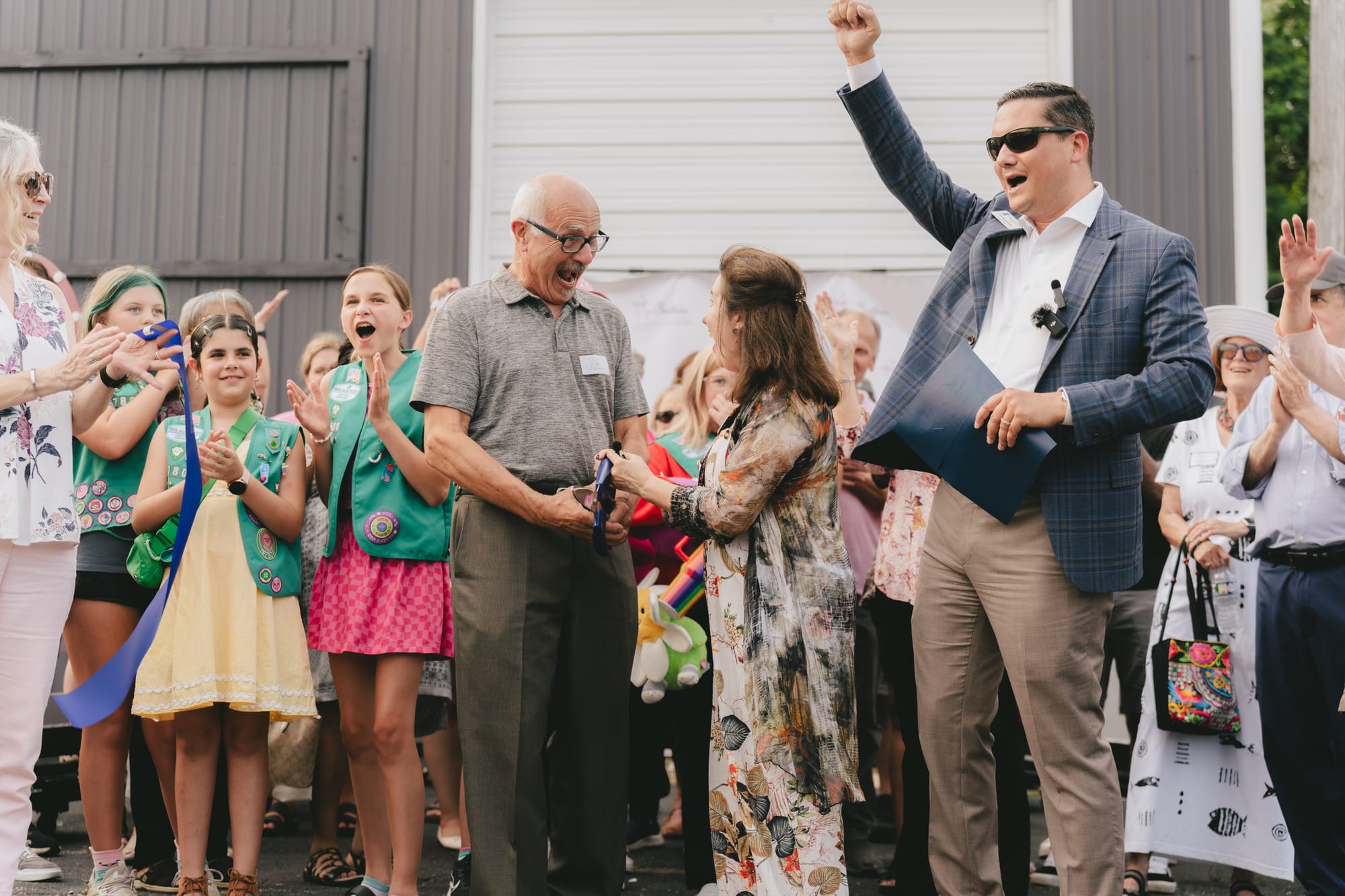
My Sister’s Closet marked a milestone on Tuesday (June 24) with a festive ribbon-cutting and community celebration at its future location. The event featured viewings of the new facility, an unveiling of community art, and remarks from Bloomington mayor Kerry Thomson.
A new chapter for My Sister’s Closet
My Sister’s Closet’s current location, on College Avenue north of Seminary Park, has a lease that won’t be renewed, expiring in June 2026. The group has found a new location, at West Second Street and Patterson Drive, which they plan to renovate. The event doubled as a fundraiser, to help support costs of renovation.
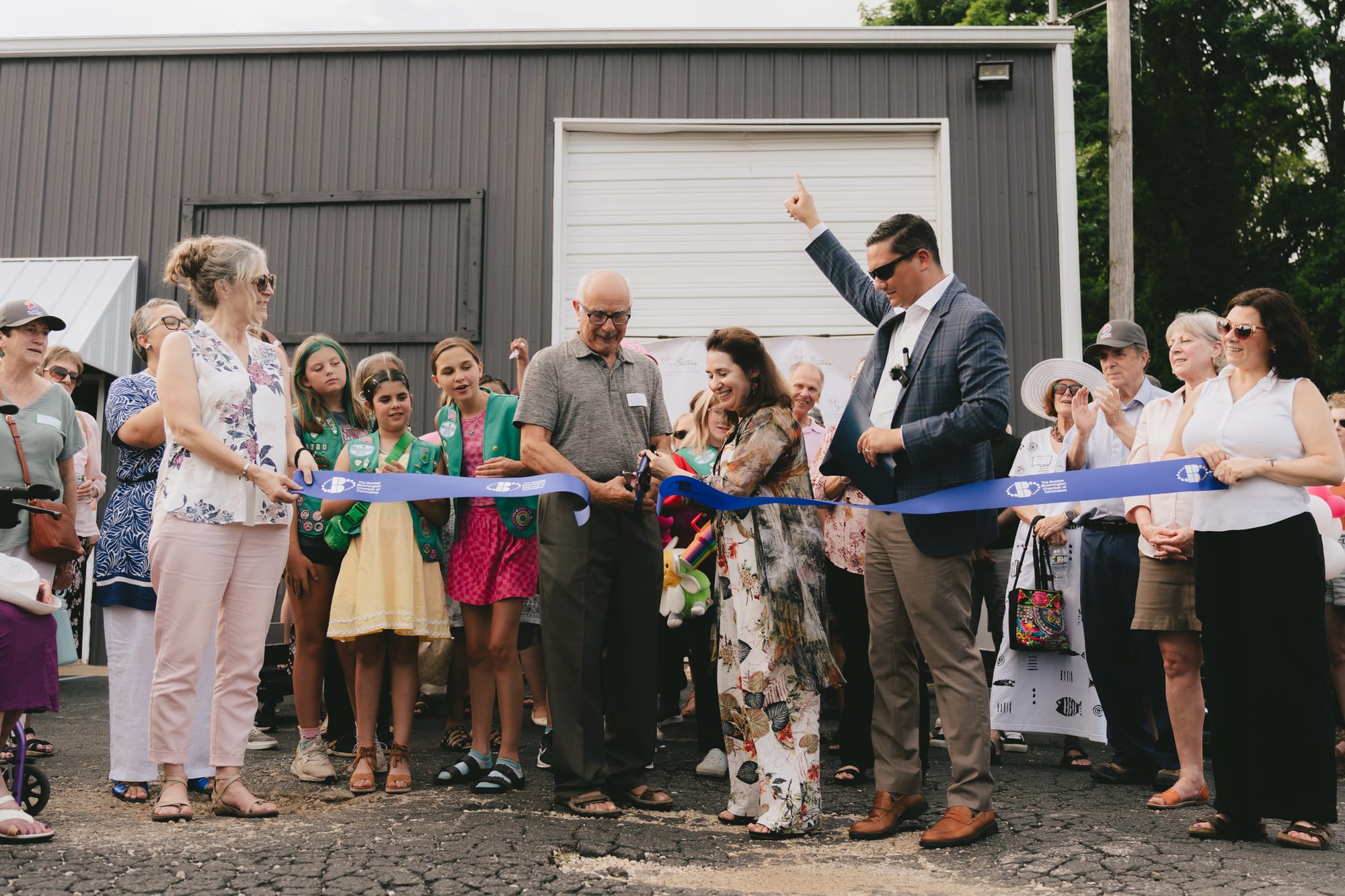
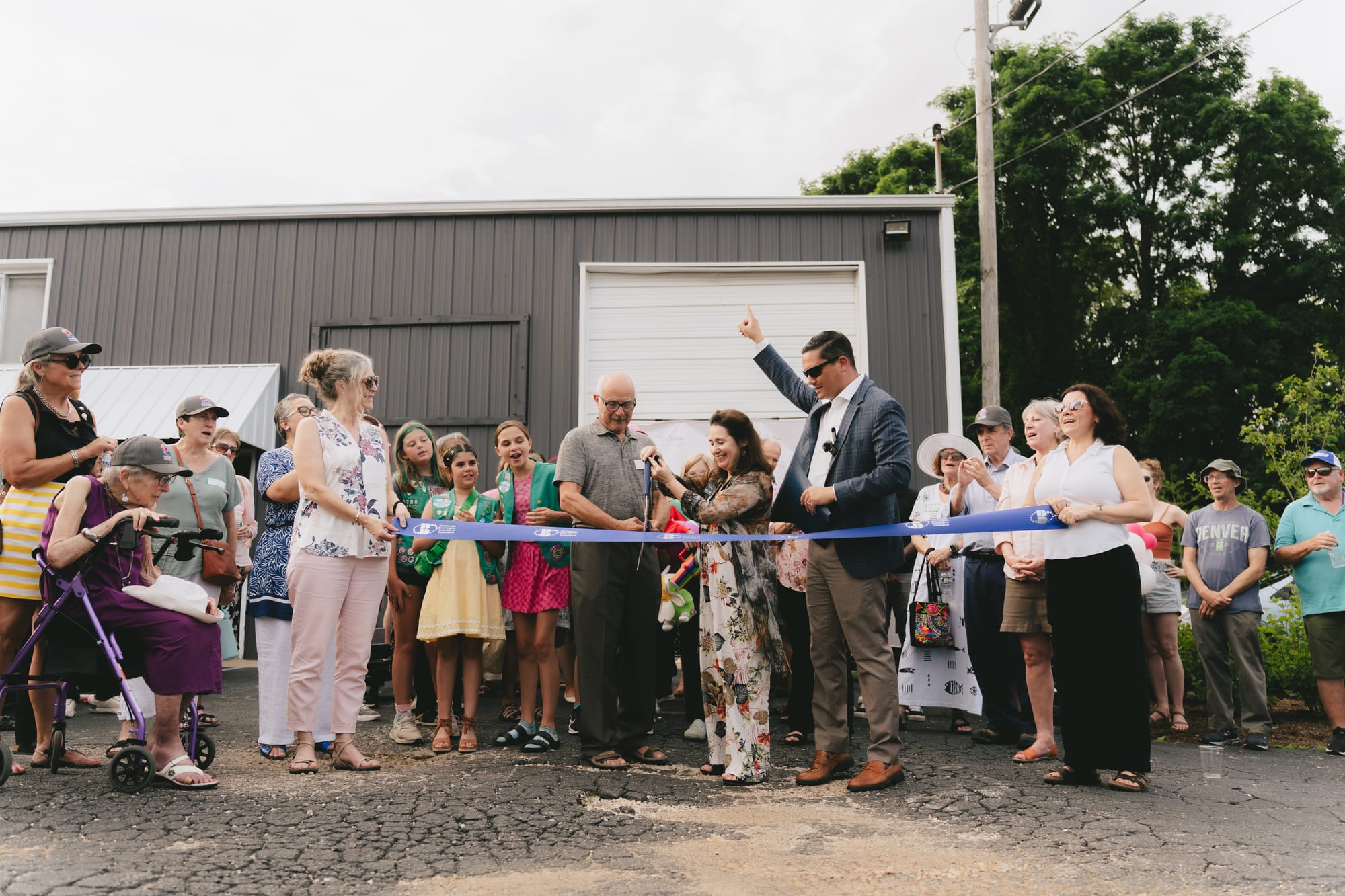
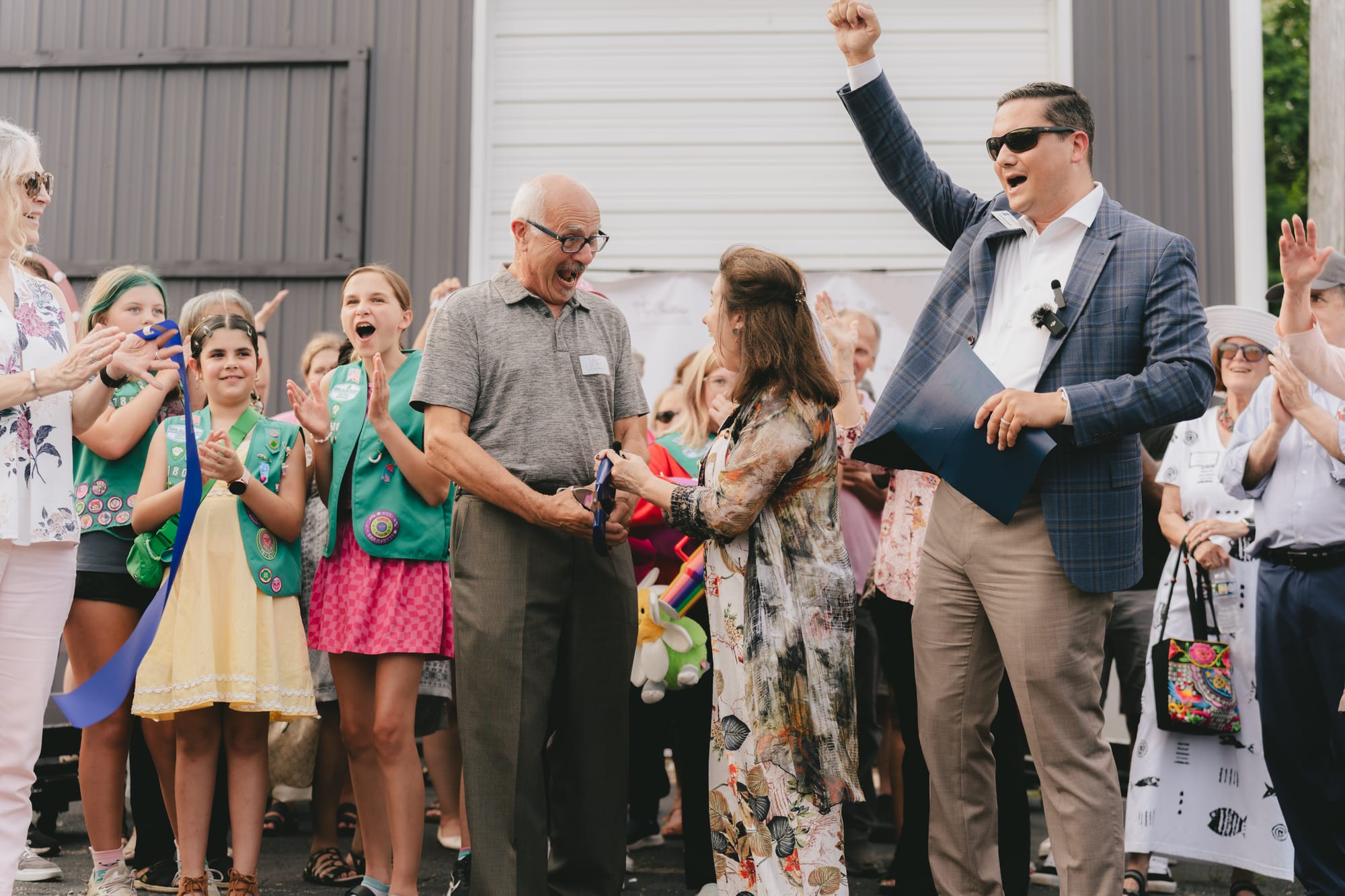
Artist Joe LaMantia and My Sister’s Closet founder and executive director Sandy Keller cut the ribbon with Greater Bloomington Chamber of Commerce president Eric Spoonmore to celebrate My Sister’s Closet’s new home. (Kelton O’Connell, June 24, 2025)
Kicking off the ribbon-cutting portion of the event, Eric Spoonmore, president of the Greater Bloomington Chamber of Commerce, said, “It’s such a special day for the community and ... for all who know the My Sister’s Closet story and the history of service that they have provided to our community.” He continued, “They really are the epitome of what it means to be a true community partner.”
My Sister’s Closet founder and executive director Sandy Keller said, “My Sister’s Closet has been the place for ... several thousand women, since 1998.” She continued, “These women come to us from every situation imaginable. So many of them are so so successful [after] they get these services,” and they are able to change their story, impacting future generations.
“We want you to be part of their success,” Keller continued. “If you would like to ... become a volunteer, or if you would like to, possibly, make a very, very timely gift, because we’ve got 12 months, we would be very appreciative.”
Bloomington mayor Kerry Thomson said in her remarks, “Tonight is really an example of why I am so proud to help lead this community, because the number of people [who] had to come together to get us to this moment ... is really phenomenal.”
She continued, “What began as a fight to be able to vote has pursued into our quest for ongoing dignity. My Sister’s Closet is an organization that helps build dignity every day.”
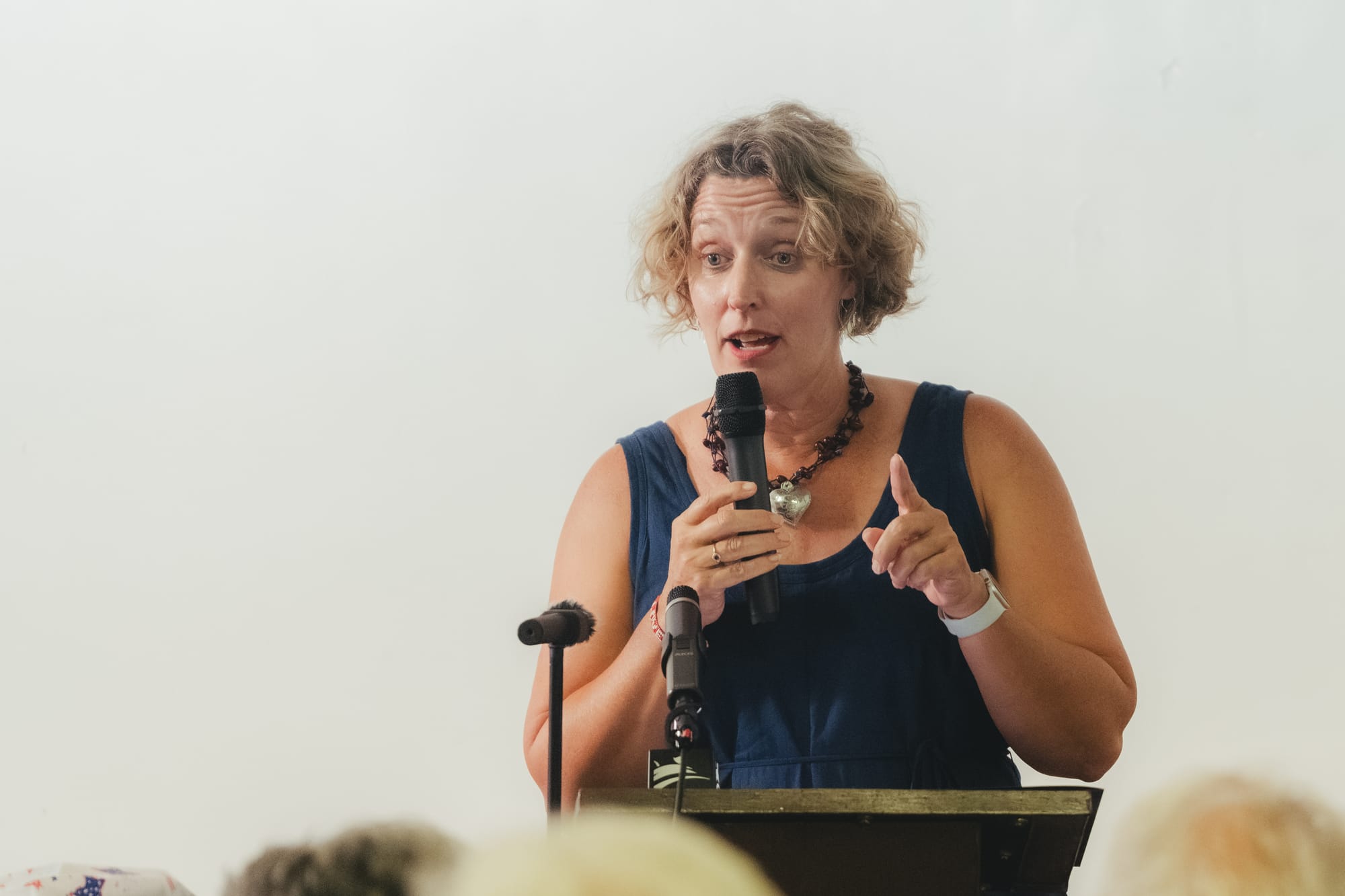
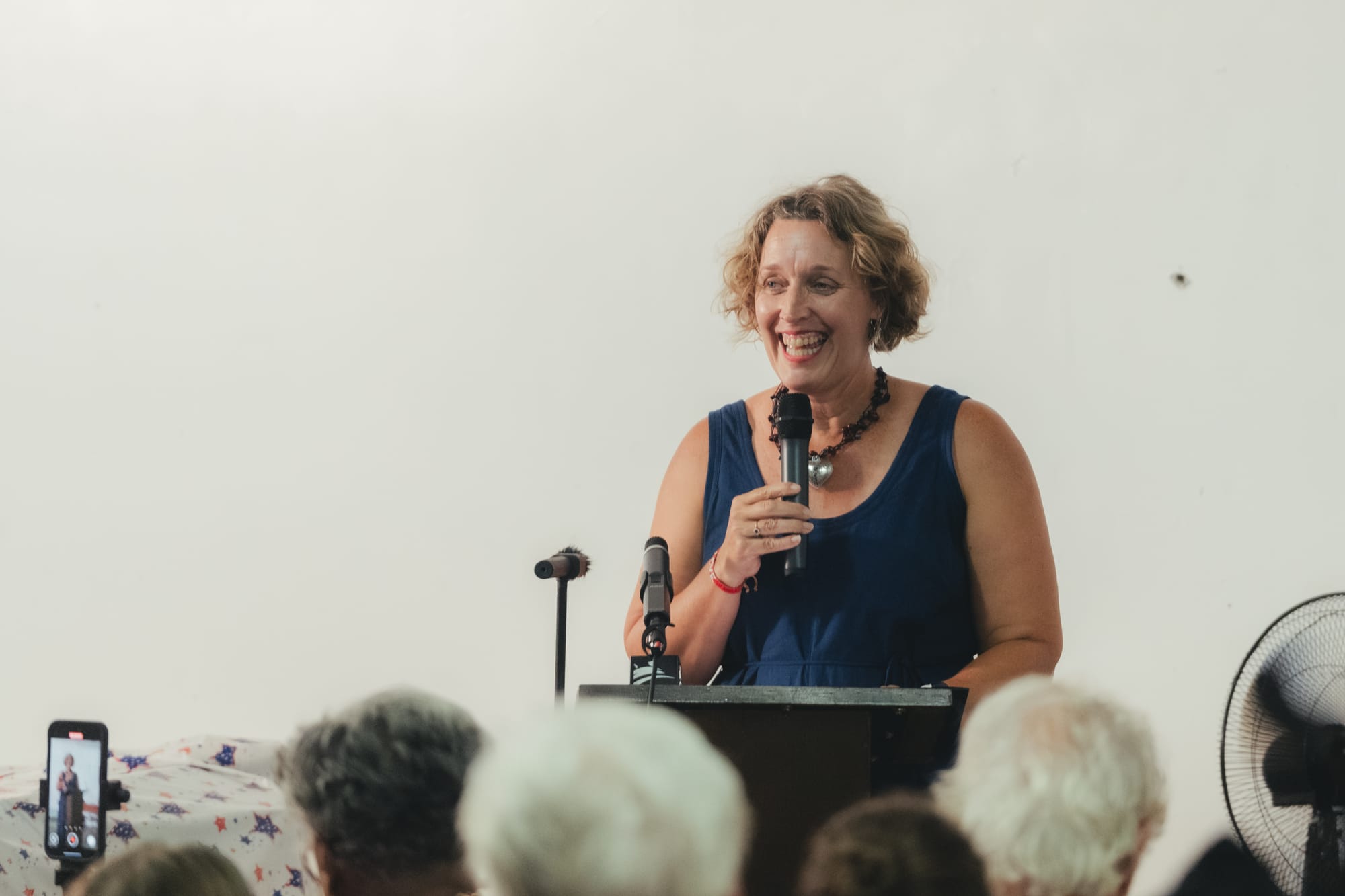
Mayor of Bloomington Kerry Thompson speaks during the My Sister’s Closet event. She proclaimed June 24, 2025 as My Sister's Closet Day of Empowering Women. (Kelton O’Connell, June 24, 2025)
Thomson said she often purchases her clothes from My Sister’s Closet. “And all of [my clothes] that are still usable when I’m done with them go to My Sister’s Closet,” she said. “So if, for some reason, you have a desire to look mayoral, you should be shopping at My Sister’s Closet.”
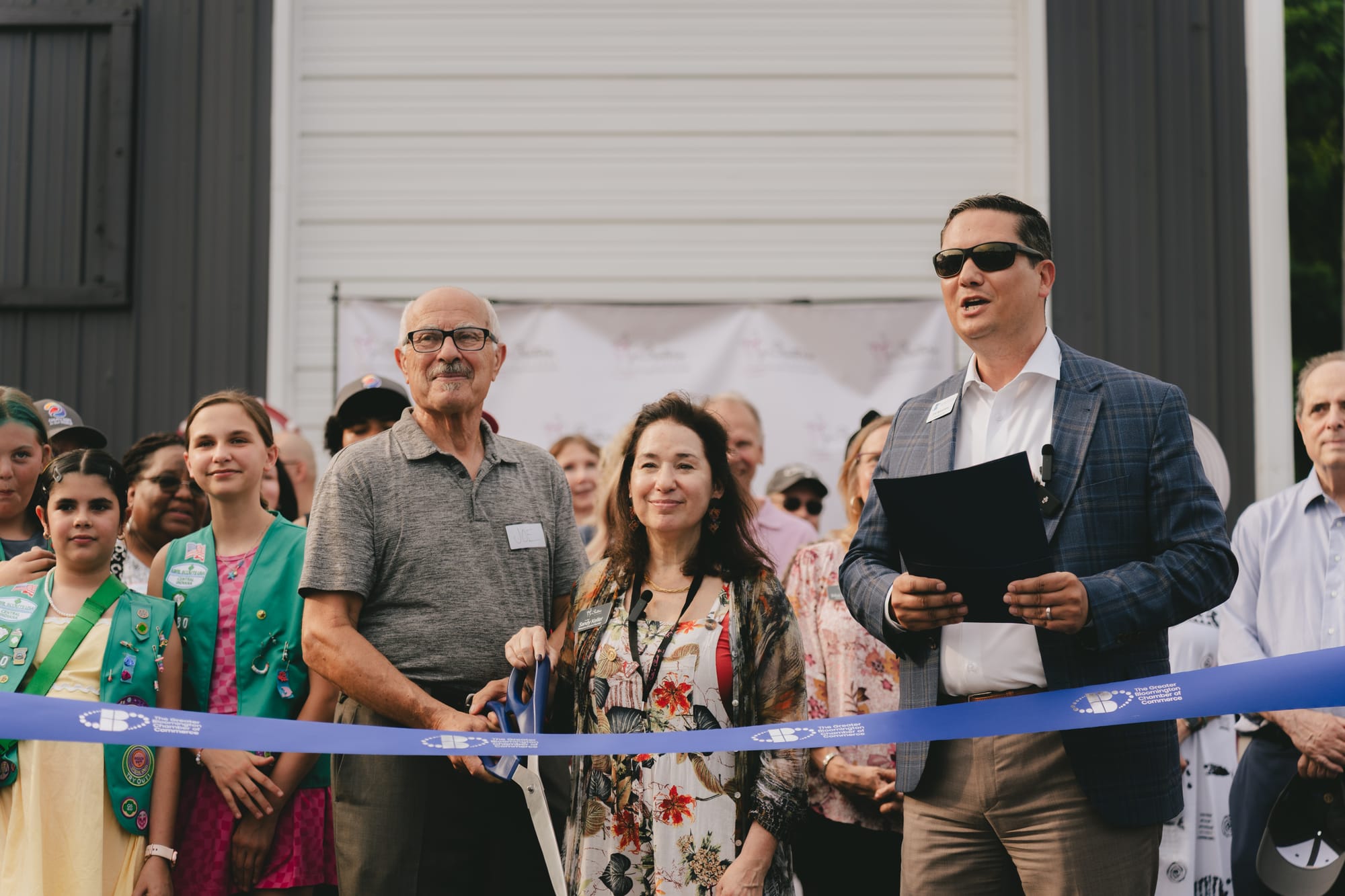
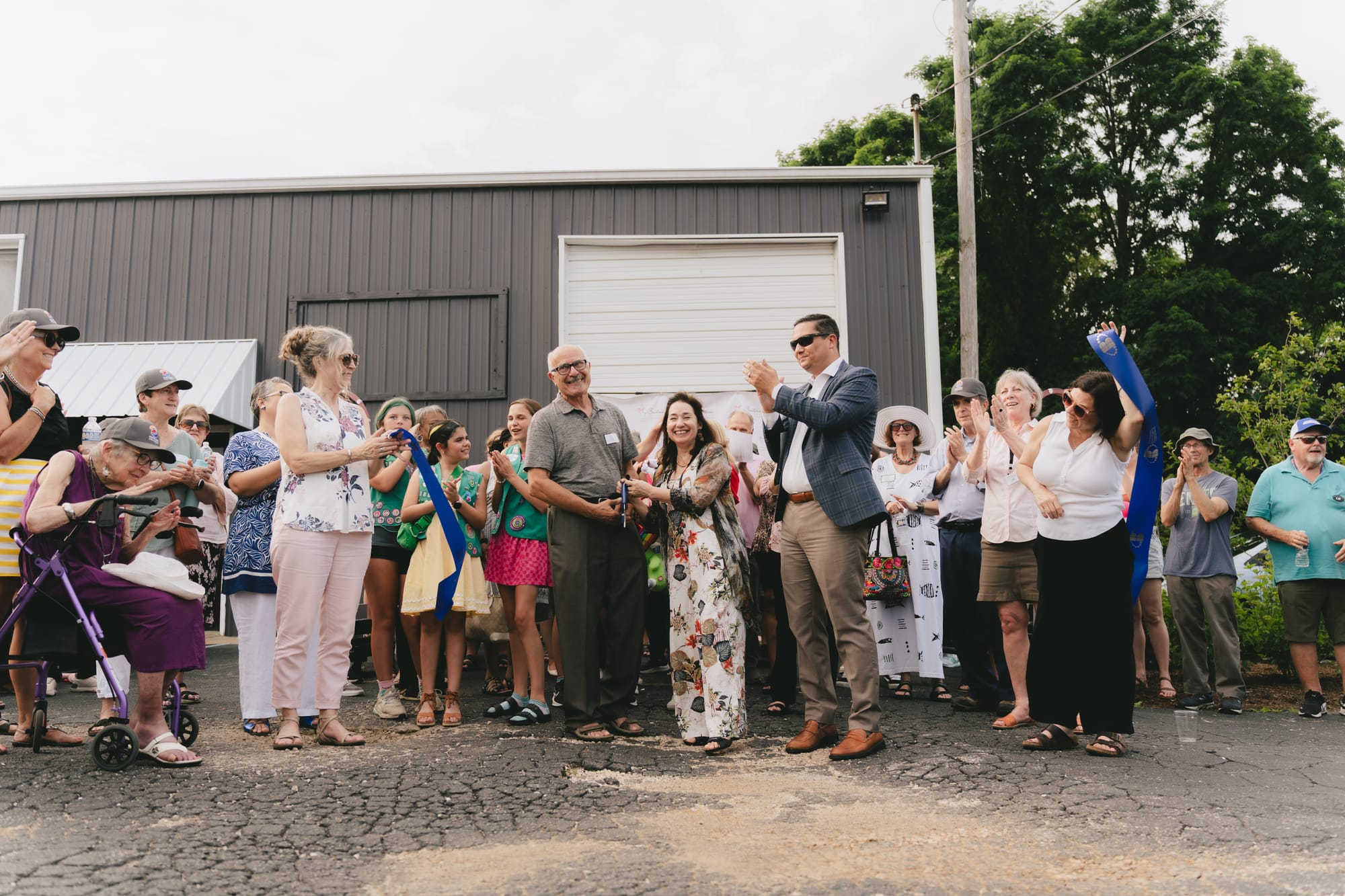
Artist Joe LaMantia, My Sister’s Closet founder and executive director Sandy Keller, and Greater Bloomington Chamber of Commerce president Eric Spoonmore at the My Sister’s Closet ribbon cutting ceremony. (Kelton O’Connell, June 24, 2025)
Monroe County History Center curator Hilary Fleck educated the audience about the history of women’s suffrage in Monroe County. “The earliest women’s suffrage organization in Monroe County was the Williamson Equal Suffrage Club, founded in March of 1886,” she said. The club hosted lectures and discussions, and traveled to other Indiana communities with speeches and rallies.
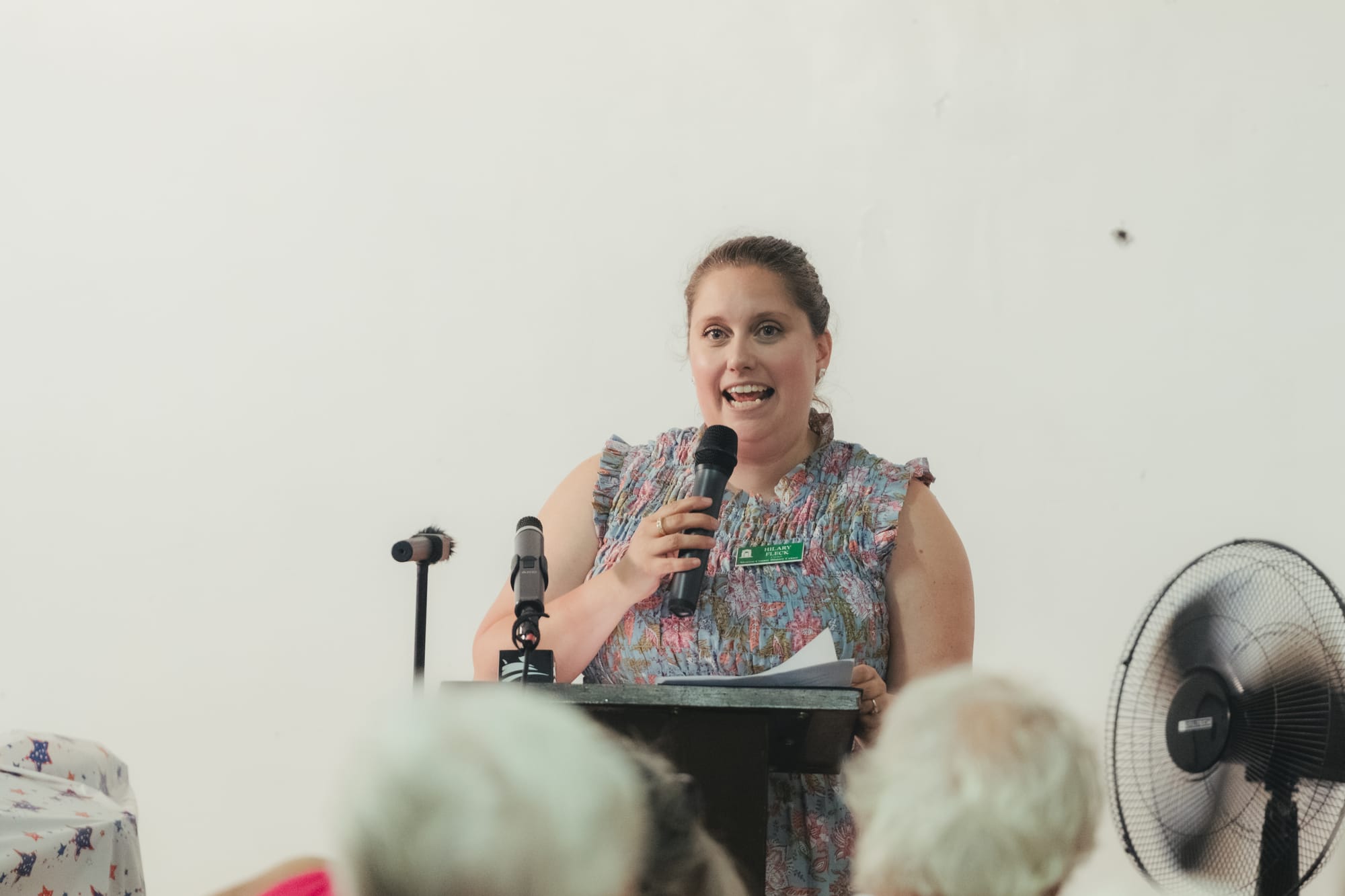
Monroe County has a rich history of women's suffrage advocates who were part of the movement, ultimately ending with the ratification of the 19th Amendment to the U.S. Constitution.
Community artwork unveiled
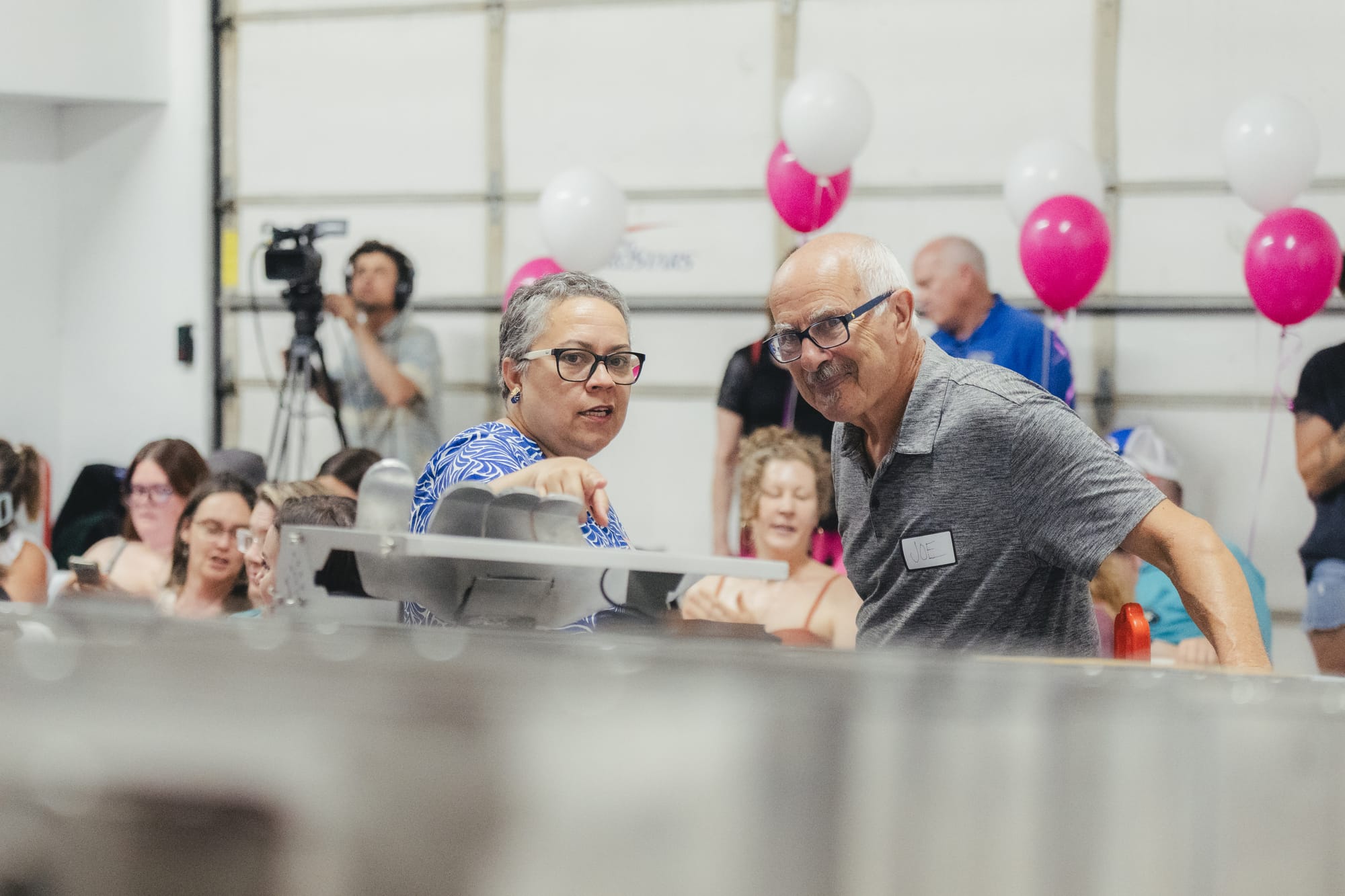
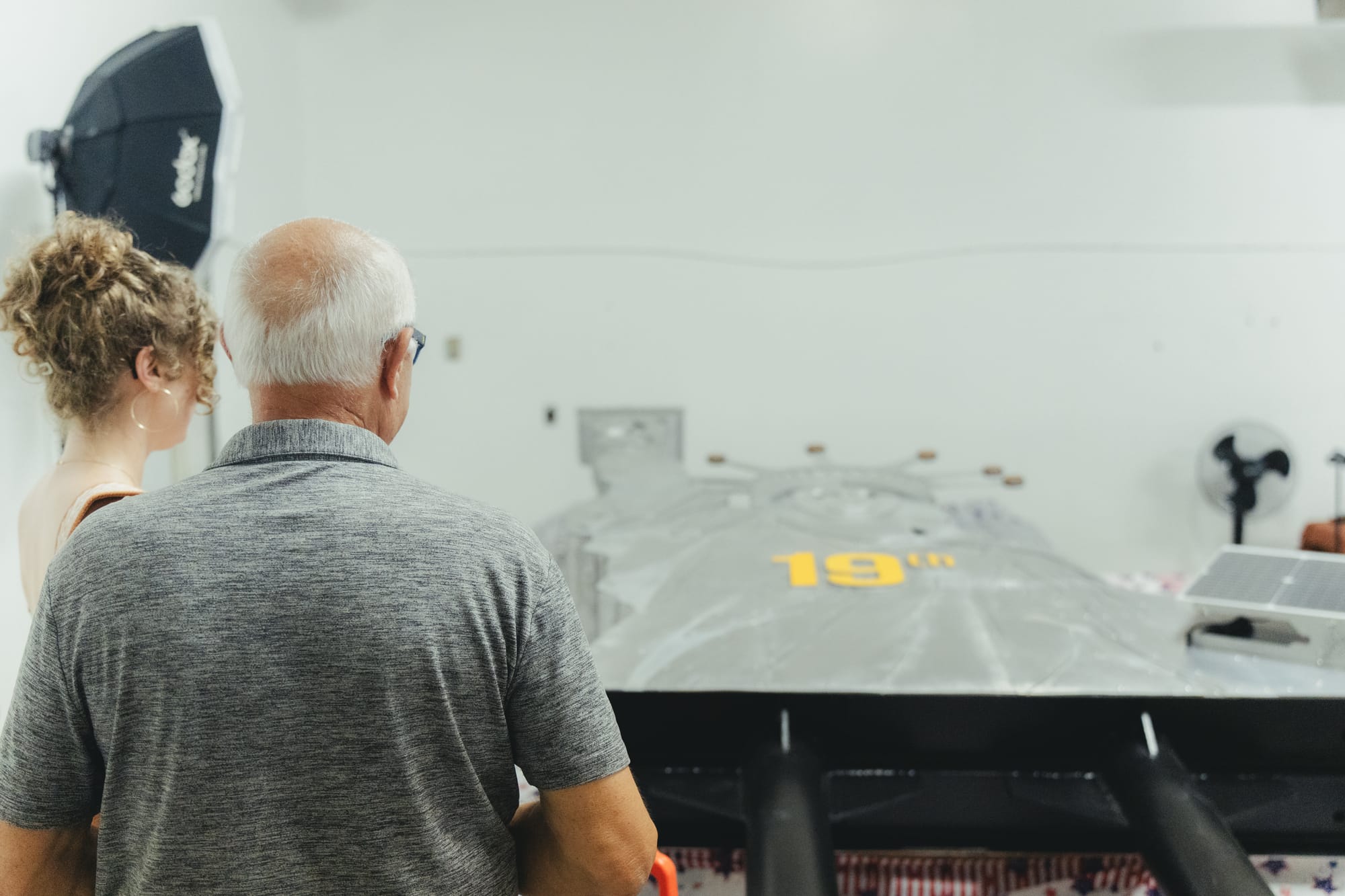
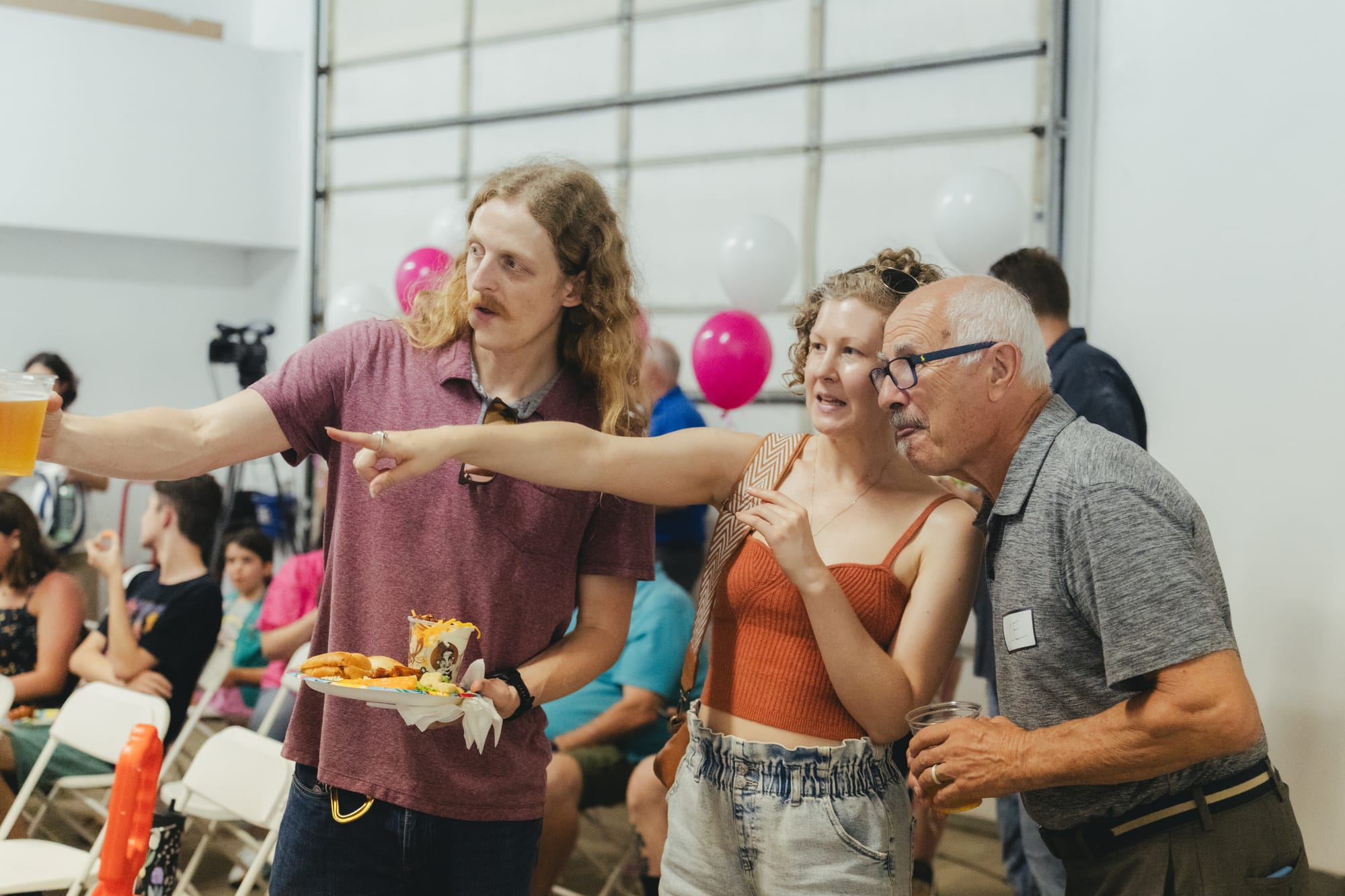
Artist Joe LaMantia discusses the sculpture with guests at the event. (Kelton O’Connell, June 24, 2025)
Local artist Joe LaMantia—creator of the Flying V Guitar, the Fairview Cat, the Angel on the B-line, and more—showcased a new 16-foot sculpture and two suffragette-inspired bike racks at the event.
Lady Liberty, reimagined
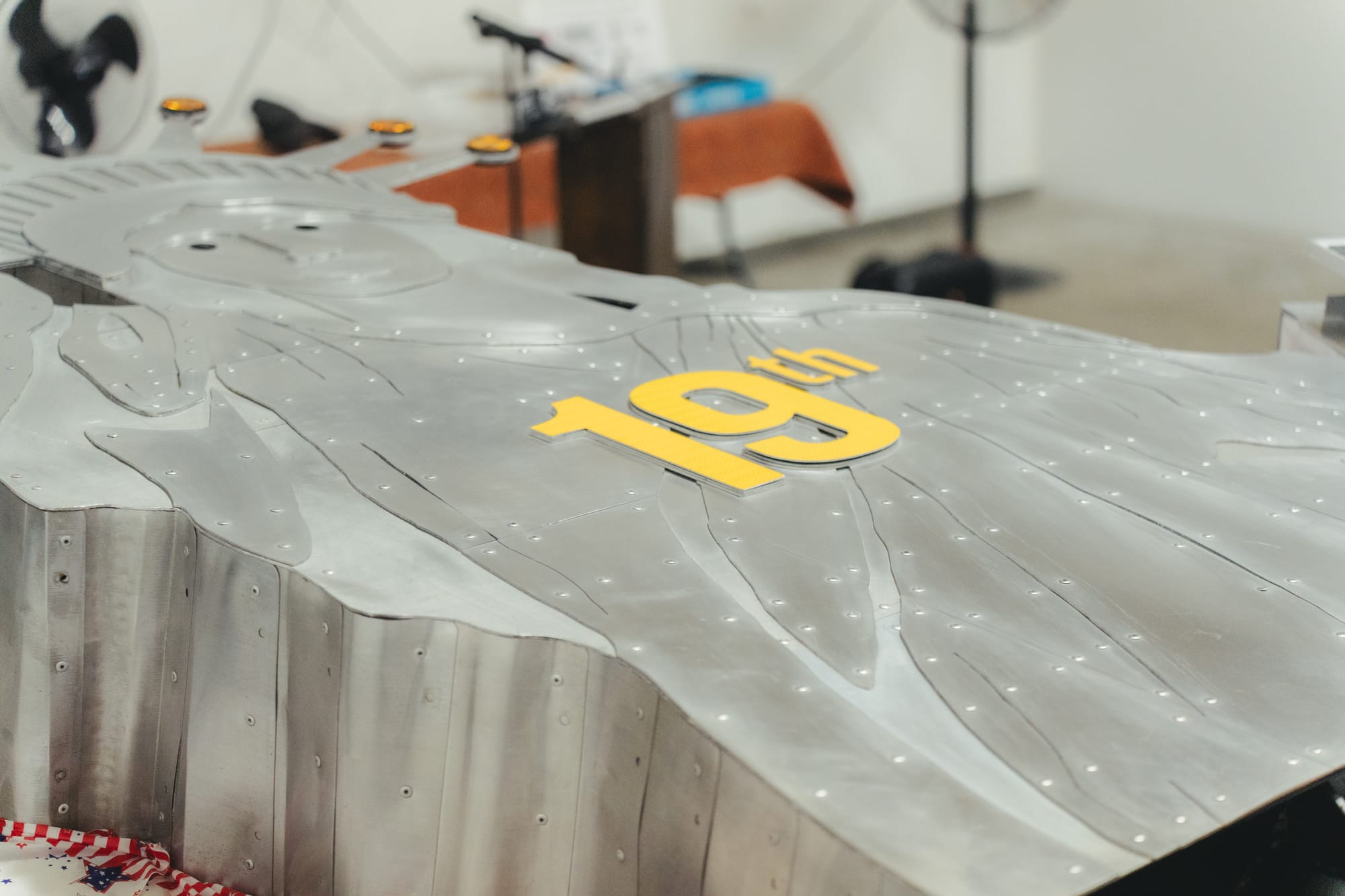
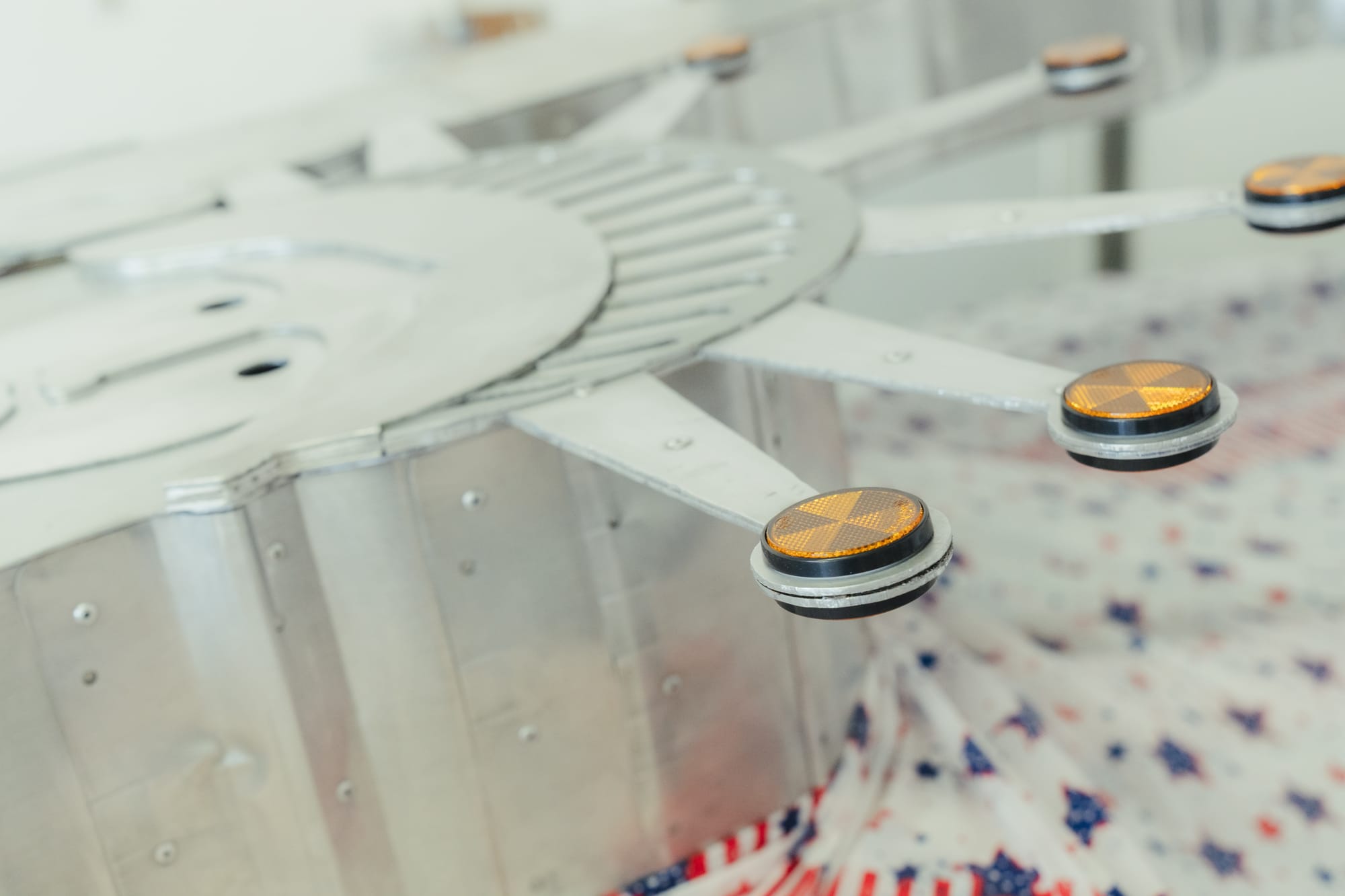
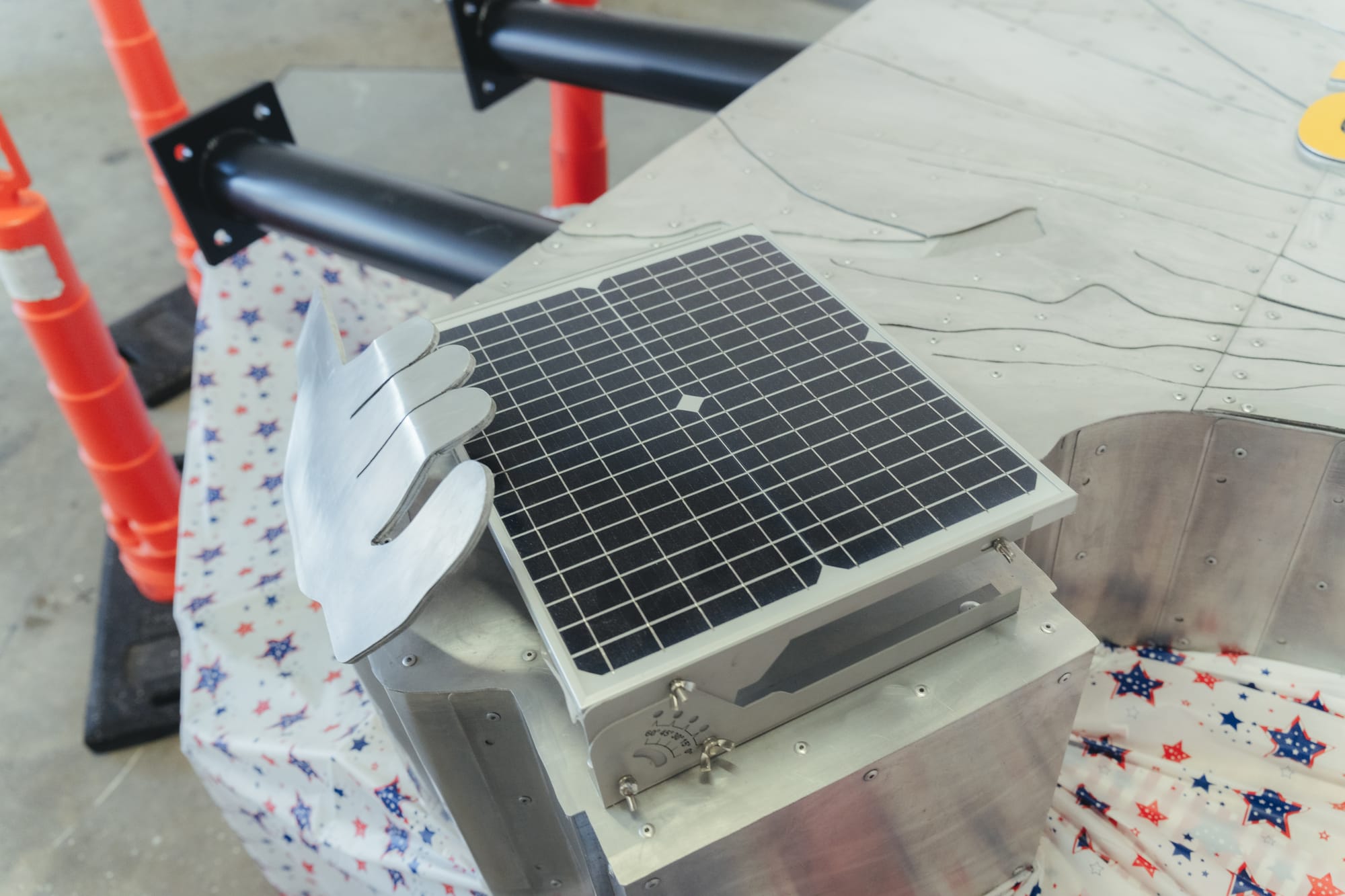
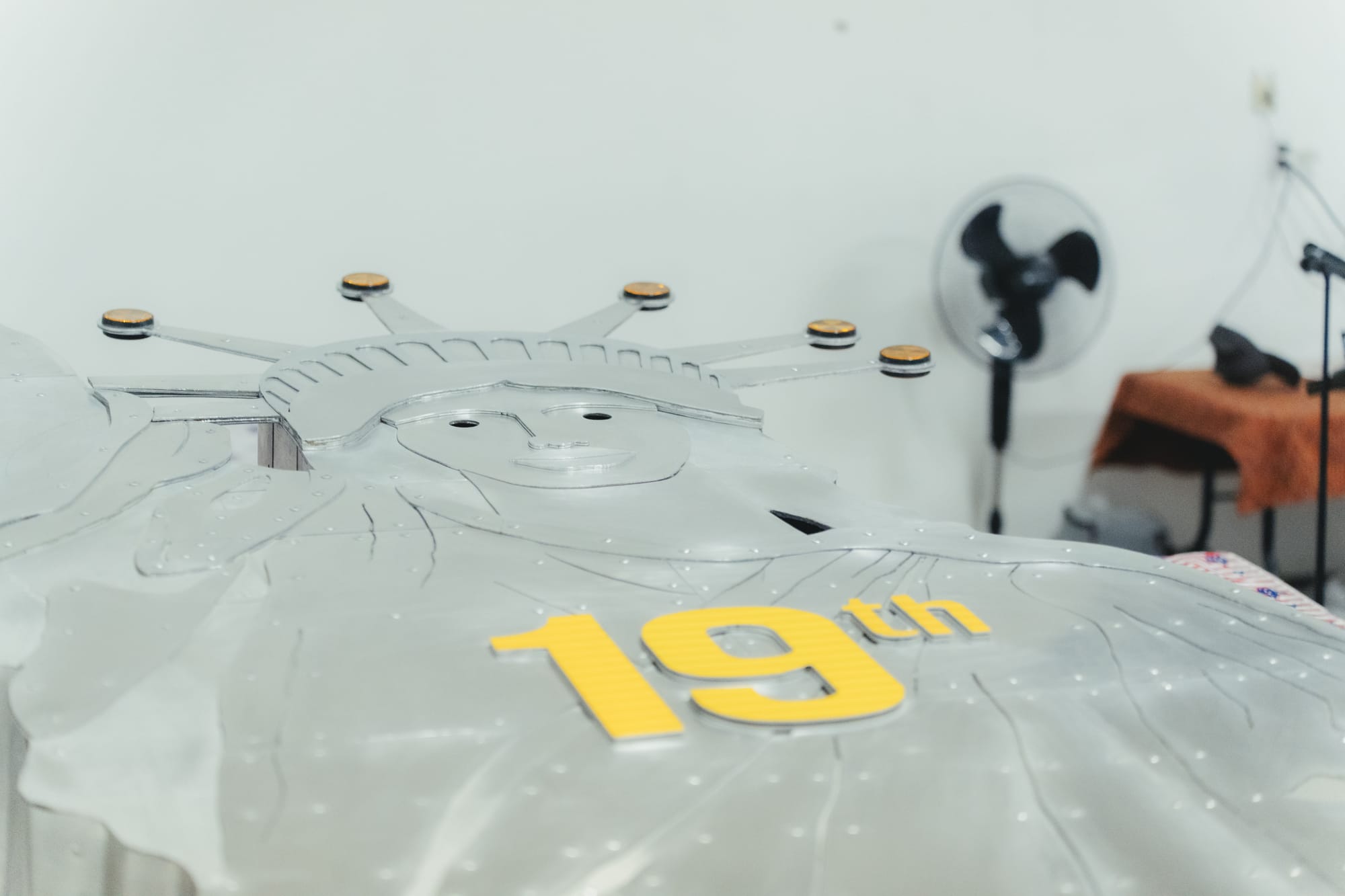
Joe LaMantia’s reimagination of Lady Liberty, which was unveiled and introduced during the My Sister’s Closet event. (Kelton O’Connell, June 24, 2025)
A collaboration between LaMantia and several community groups, this 16-foot-tall, 800-pound rendition of the Statue of Liberty symbolizes freedom. Elements such as bike reflectors and the gold "19th" directly reference women's fight for suffrage.
Introducing the sculpture, Keller said that it is mostly made of the back of upselled and polished street signs and reshaped license plates. It is supported by a frame made up of a discarded square post, which is usually used to hold up street signs.
The Statue of Liberty overlooking the New York Harbor is holding the Declaration of Independence. LaMantia's Lady is holding a solar panel.
On a table for viewing were three elements of the sculpture that weren't yet installed: a set of glass eyes to be inserted into the sculpture's face; the flames for the torch, custom-made out of thick pieces of colored glass; and shackles, which will be embedded into the concrete.
The shackles symbolize the original meaning behind the Statue of Liberty. The Lady gifted from France has broken chains at her feet, but the original design included chains in the statue's left hand. The chains symbolize the end of slavery, celebrating freedom over oppression. LaMantia sought to bring this meaning back in his piece.
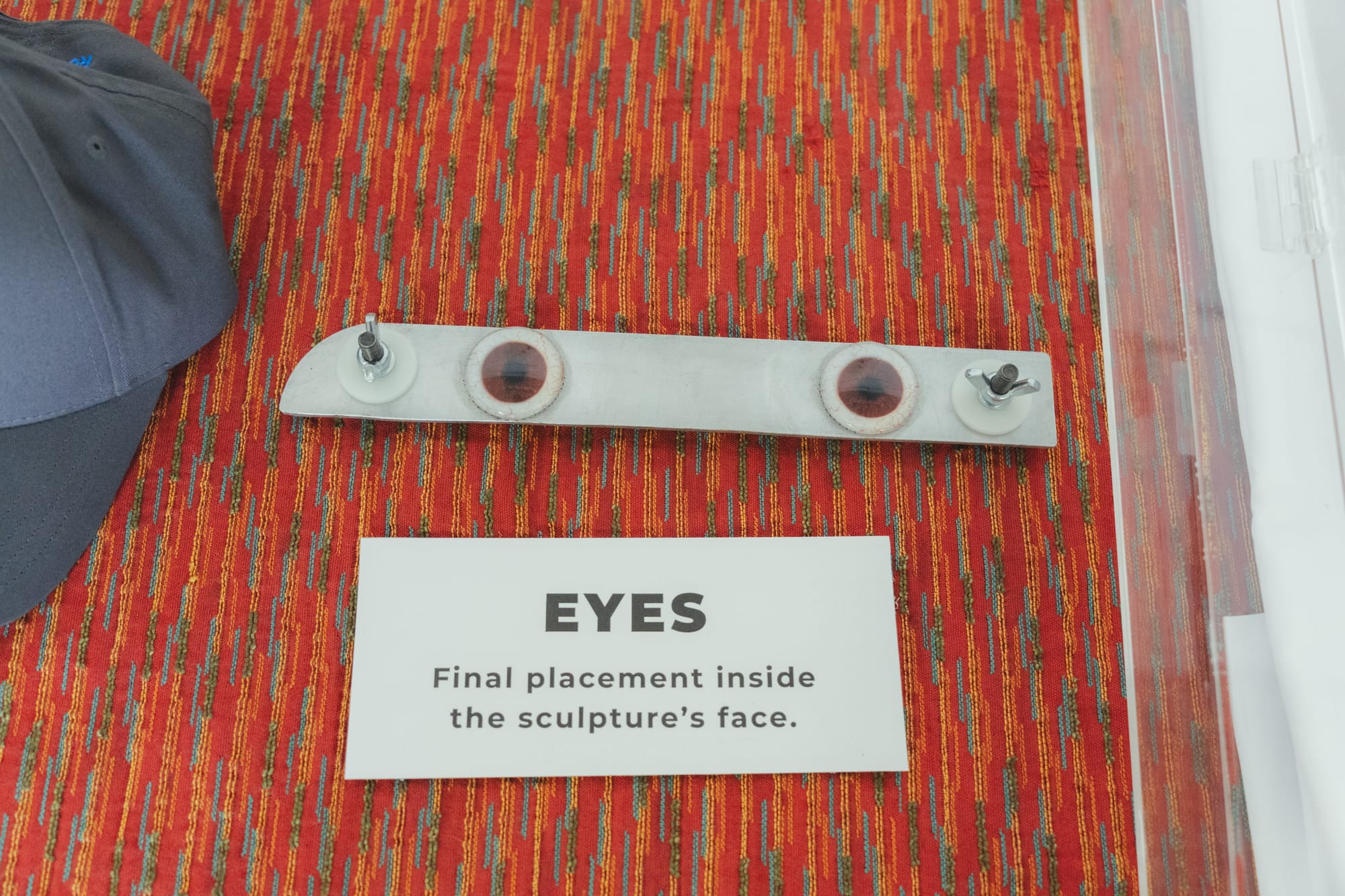
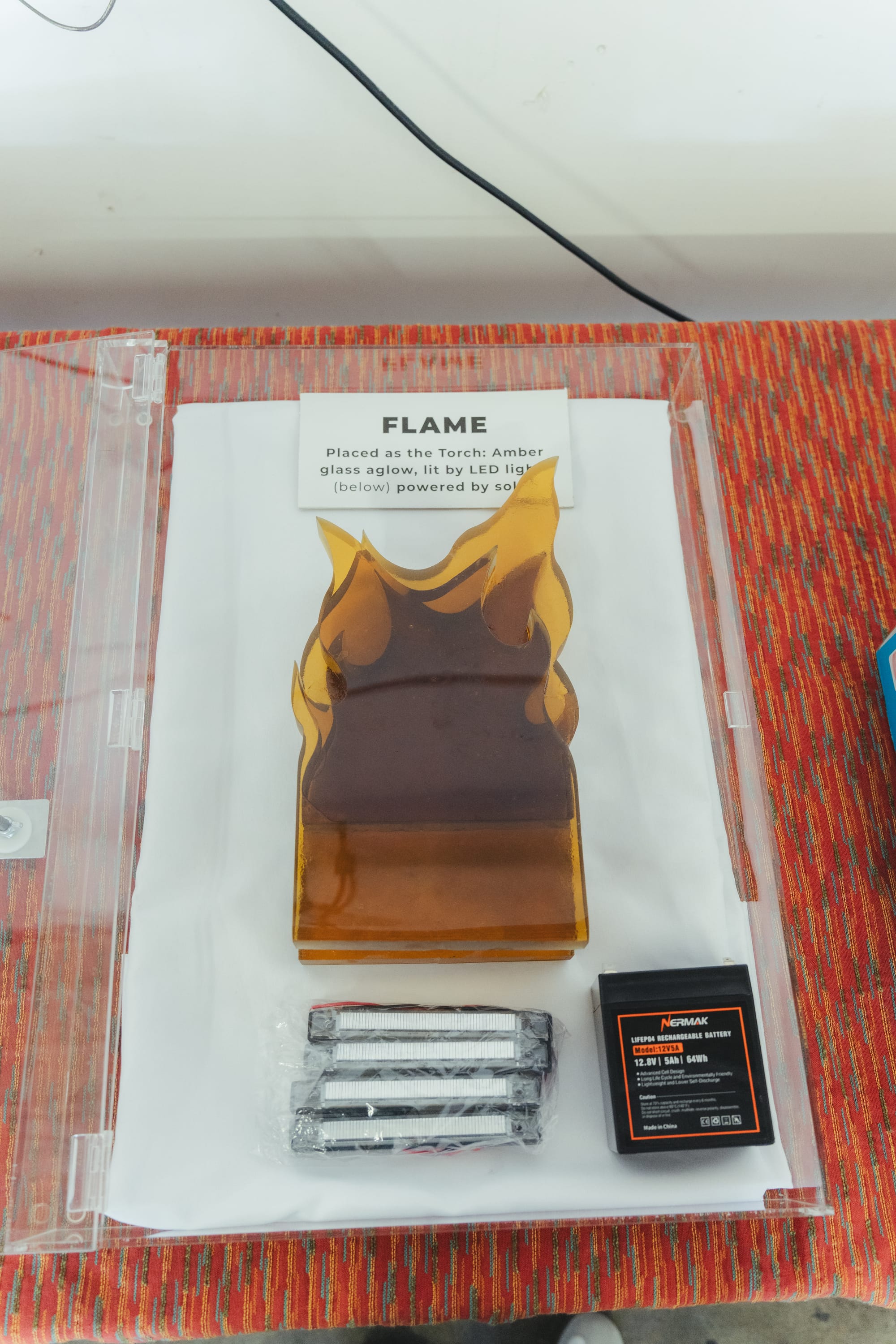
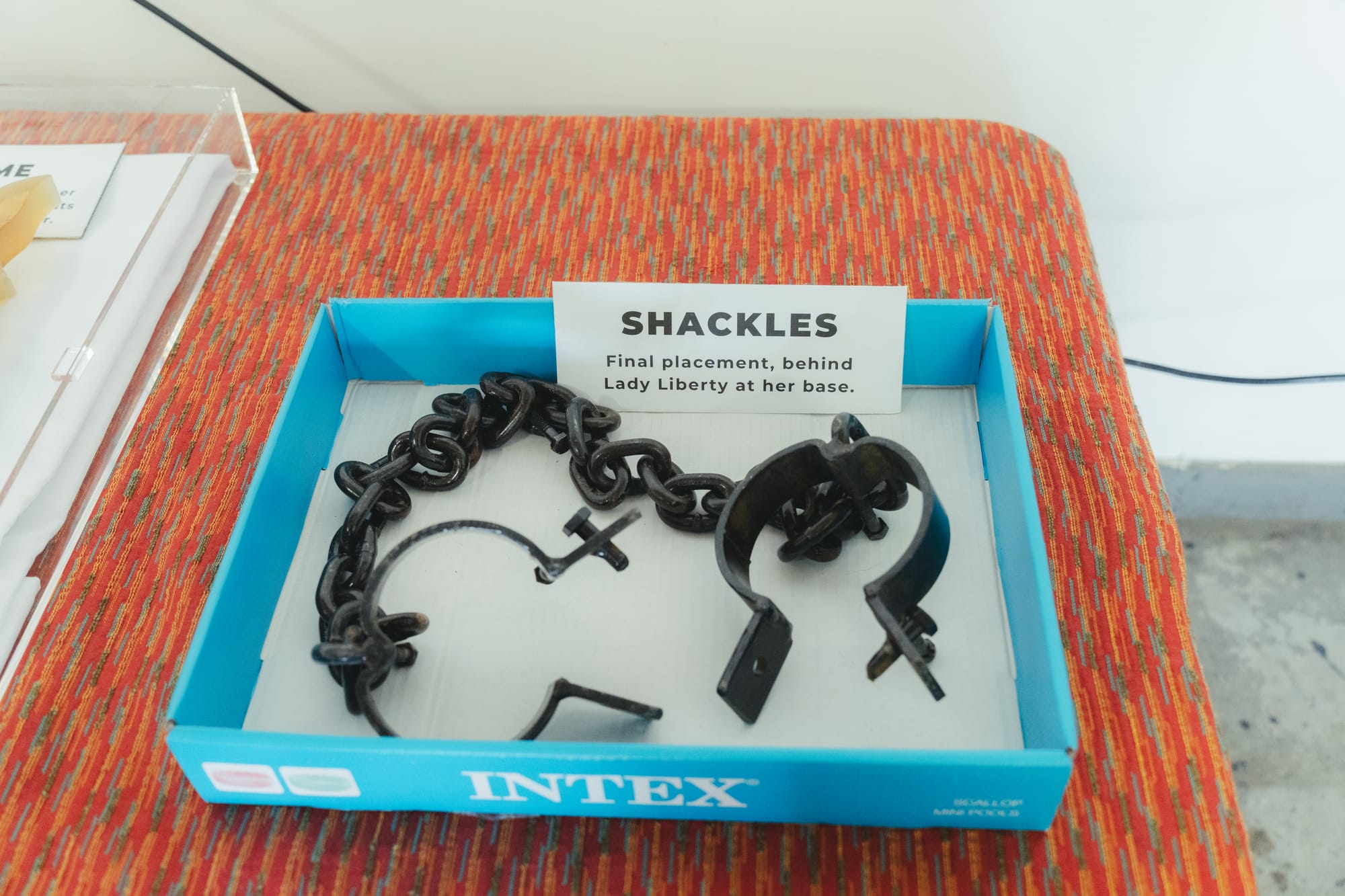
Parts of Joe LaMantia’s Lady Liberty sculpture that will be installed. (Kelton O’Connell, June 24, 2025)
LaMantia said, “Doing this was such a trip. It really is the process that is so wonderful, because of all the donations, all the people who stepped forward.” He worked with Bruce’s Welding and students at the Hoosier Hills Career Center on this project.
“This is what a community should be,” he said. “It is. And I am so proud.”
Symbolic bicycle racks
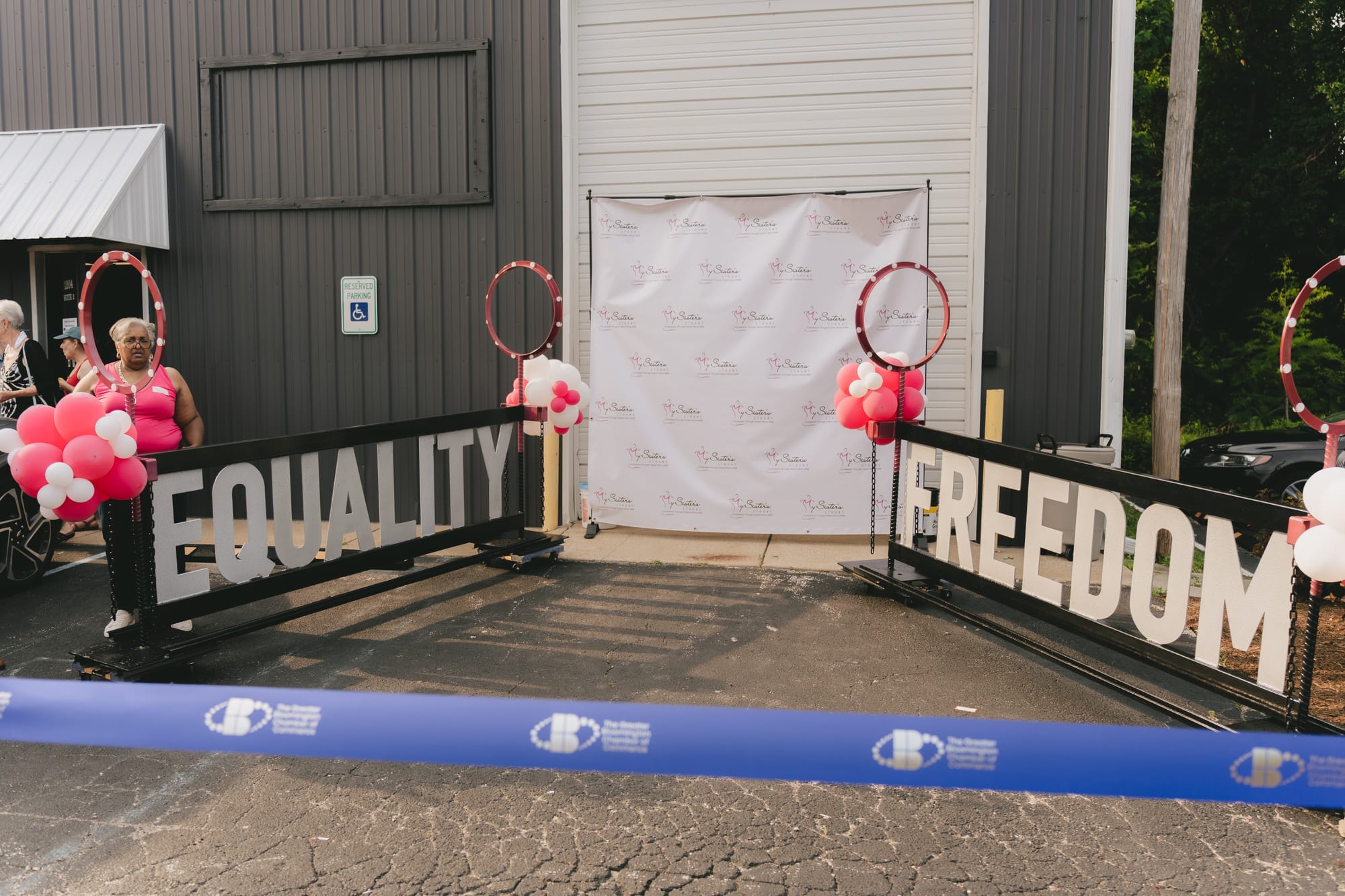
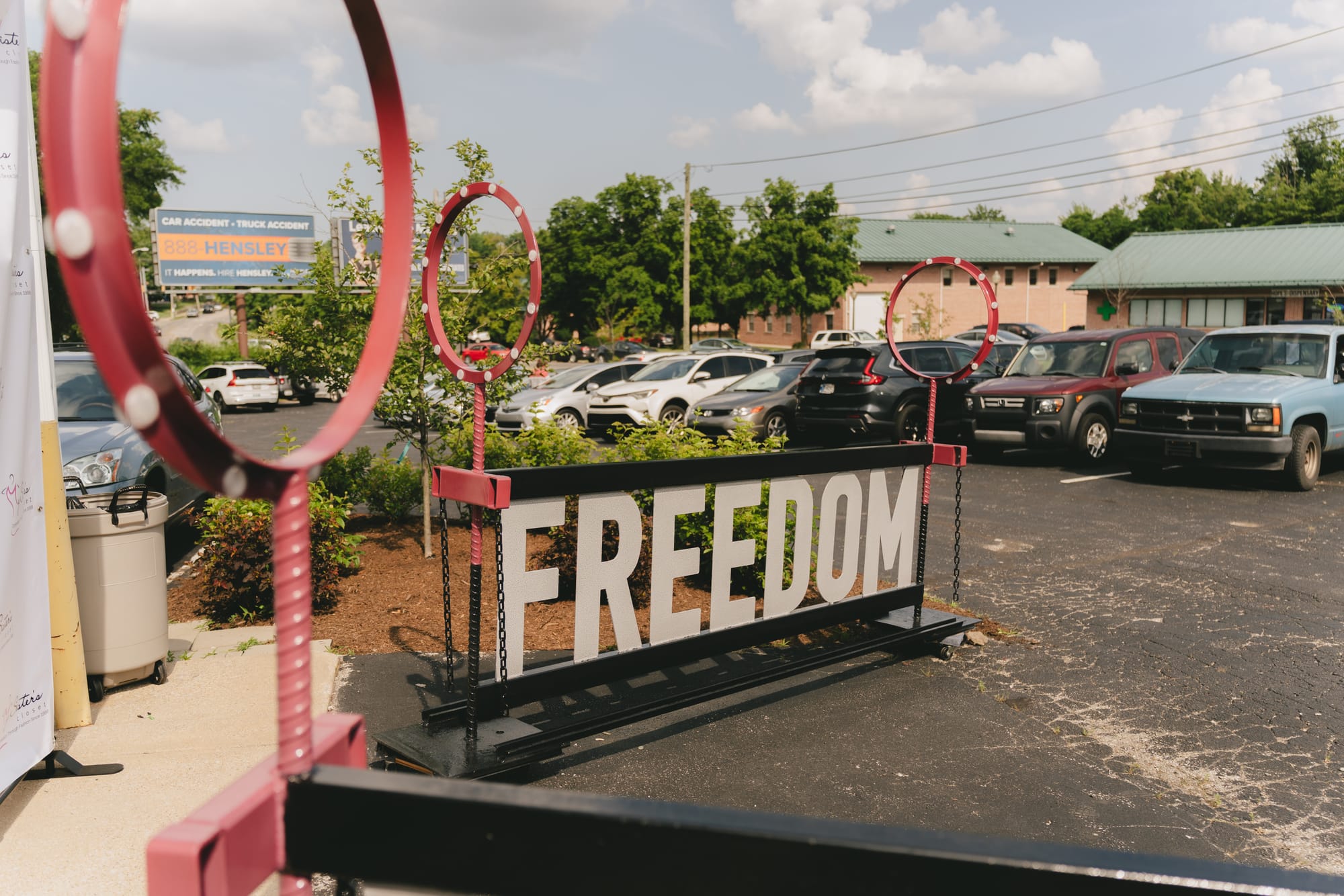
Joe LaMantia’s bike racks to be installed at My Sister’s Closet's new location symbolize the women’s suffrage movement. (Kelton O’Connell, June 24, 2025)
LaMantia’s bike racks spell out the words “equality” and “freedom.”
Keller said during her remarks that many My Sister’s Closet customers ride their bicycles to the store, only for them to be stolen due to the current location’s lack of a bike rack. When she decided to take action, and researched artistic bike racks, she found old pictures of women in long robes and dresses riding bikes.
“We looked and found out that these were actually suffragettes,” she said. “And while they did not have access to their husband’s cars, they did have access to bicycles.
“So from women’s room to women’s room, ... from one town to one city, they rode their bikes, and these women got out the word to vote.”
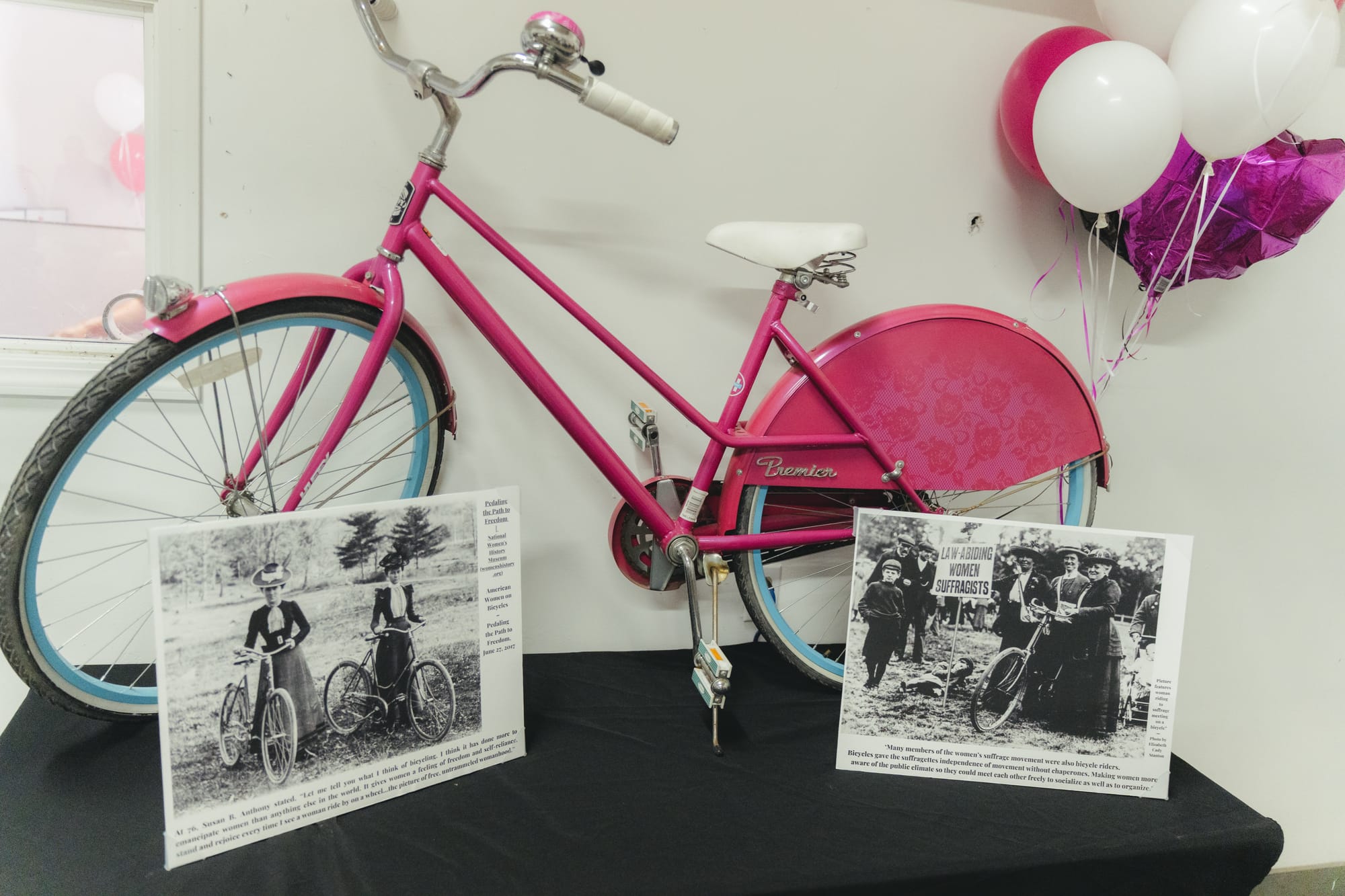
Several Girl Scouts from Troop 3780 served guests cool towels at the event, when outside temperatures were over 90 degrees. Thomson closed her remarks by thanking them: “To all of you Girl Scouts in the room, thank you for your service. And remember when you turn 18, do not take that vote for granted. Go get registered and use your right to vote.”
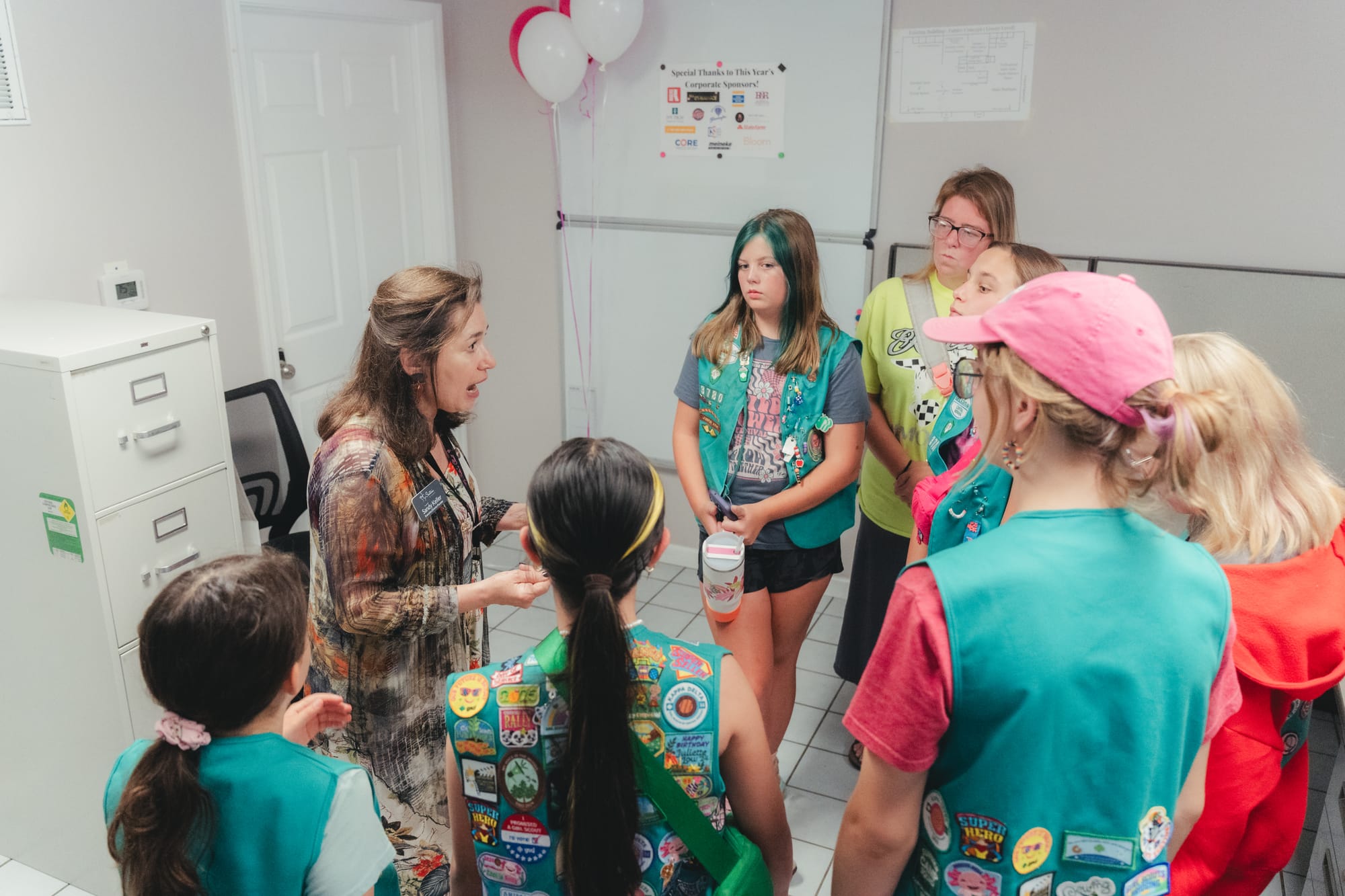
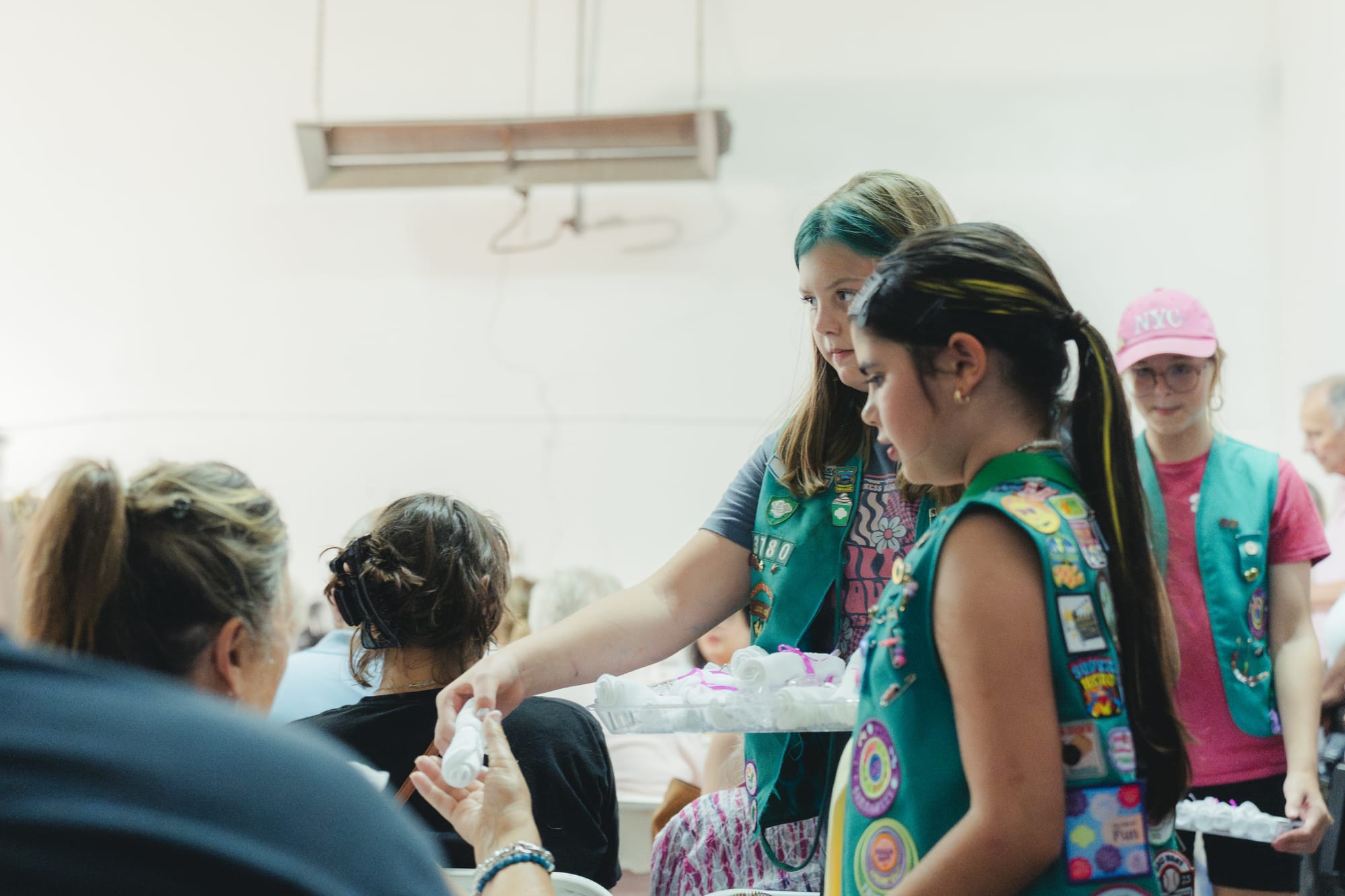
Left: My Sister’s Closet founder and executive director Sandy Keller instructs Girl Scouts in preparation for the event. Right: Girl Scouts deliver cool towels to guests during the event. (Kelton O’Connell, June 24, 2025)
Photos: My Sister’s Closet’s New Location
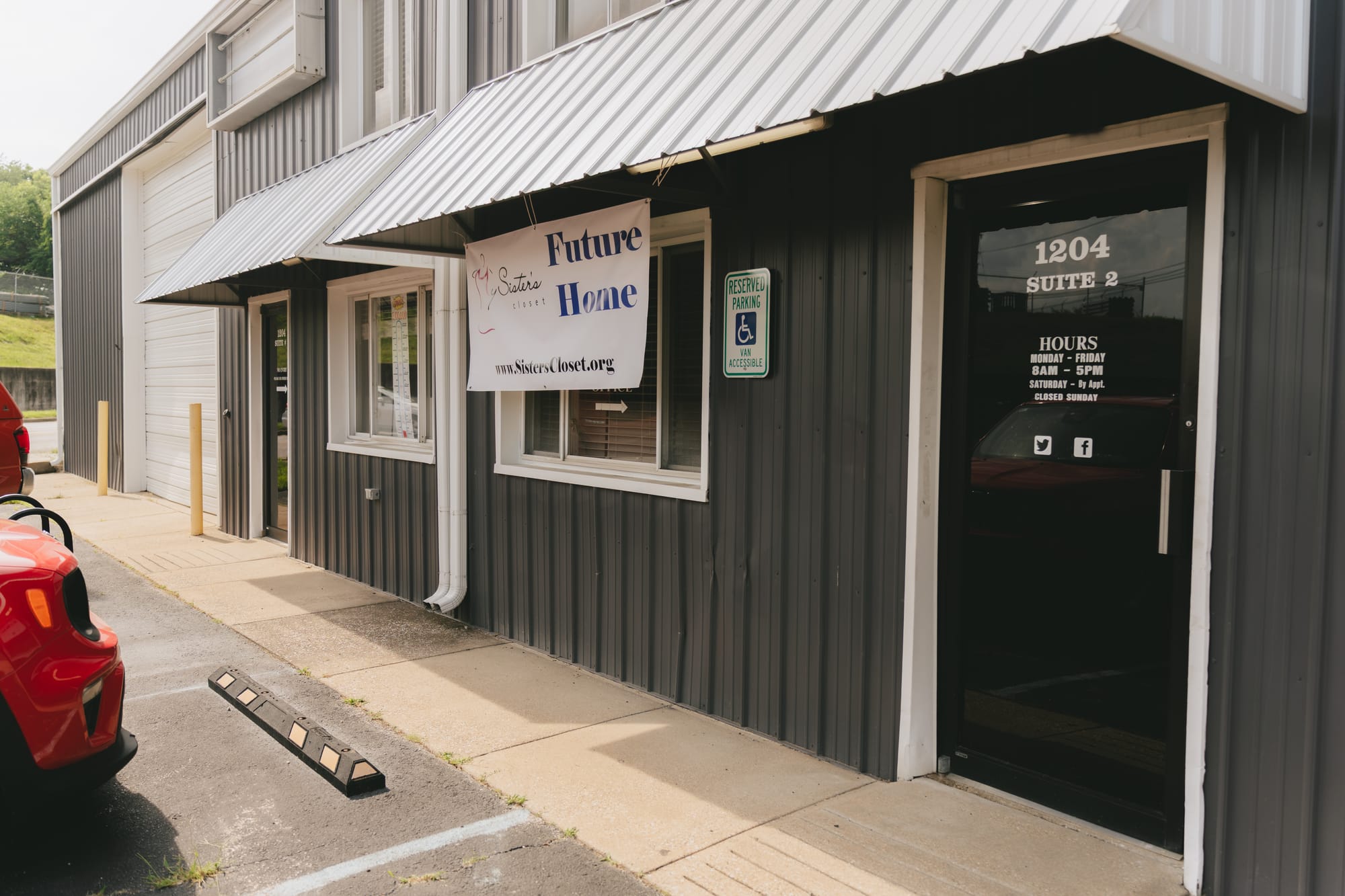
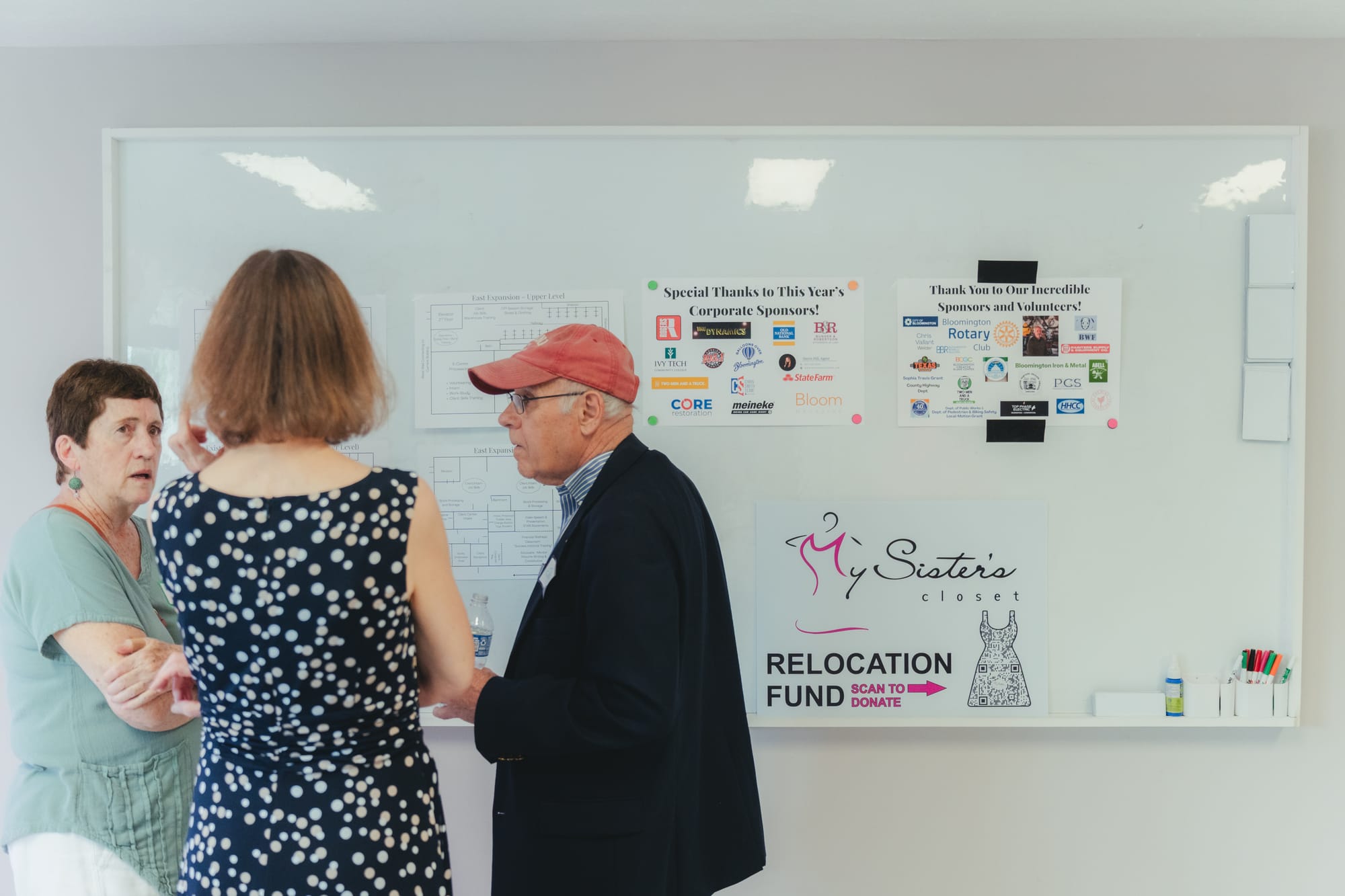
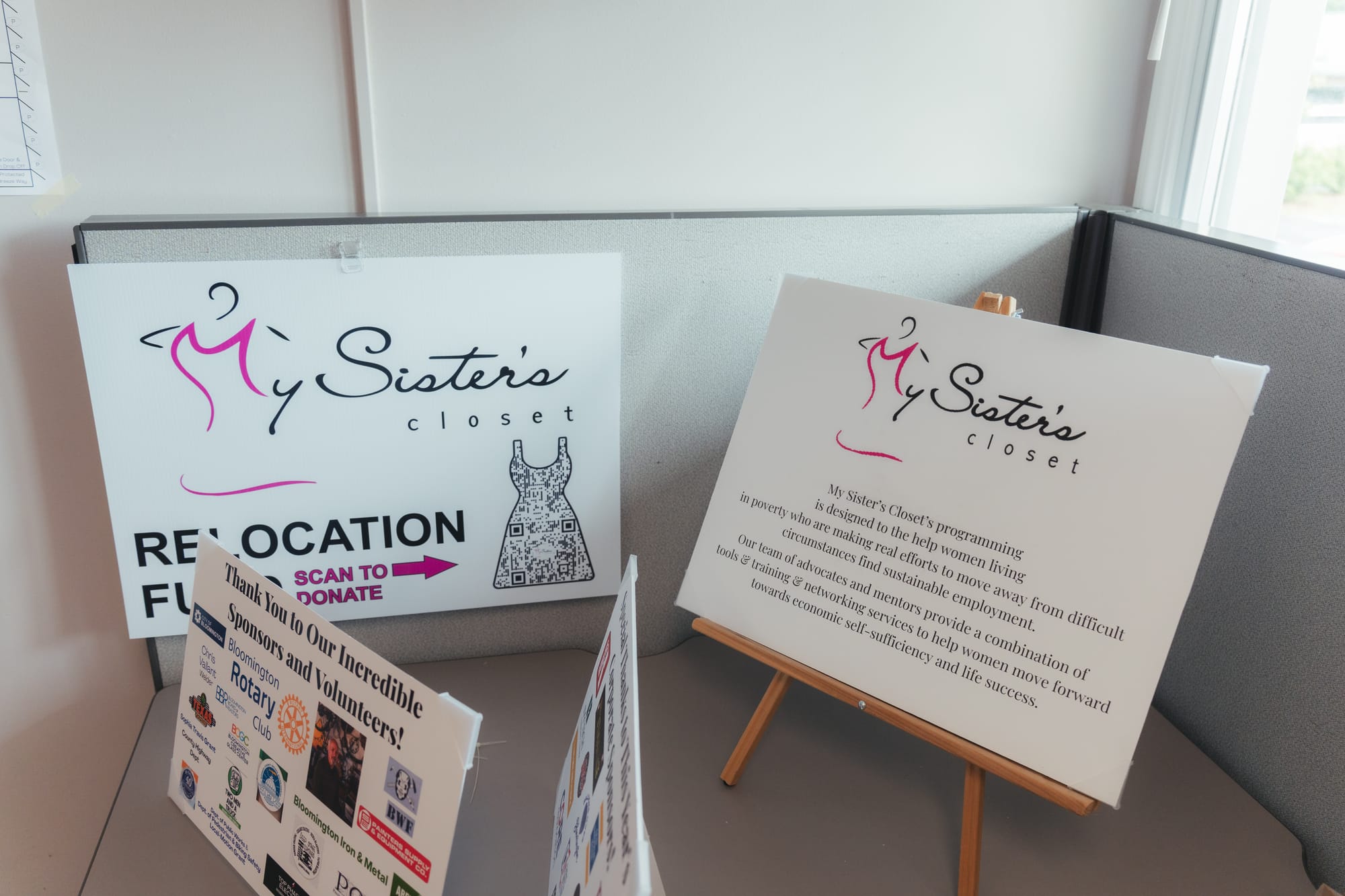
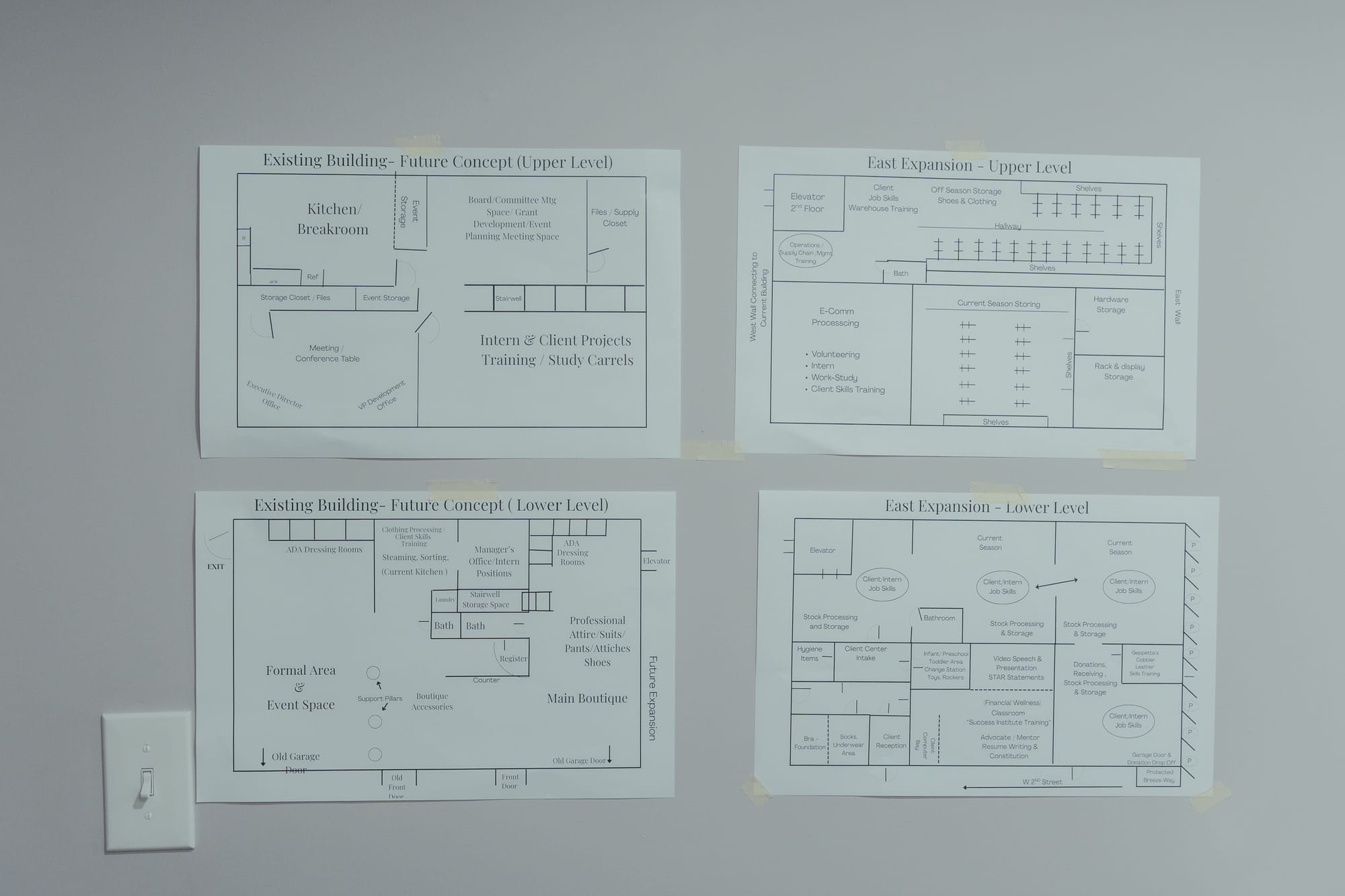
The event included viewings of spaces in the new My Sister’s Closet facility. (Kelton O’Connell, June 24, 2025)

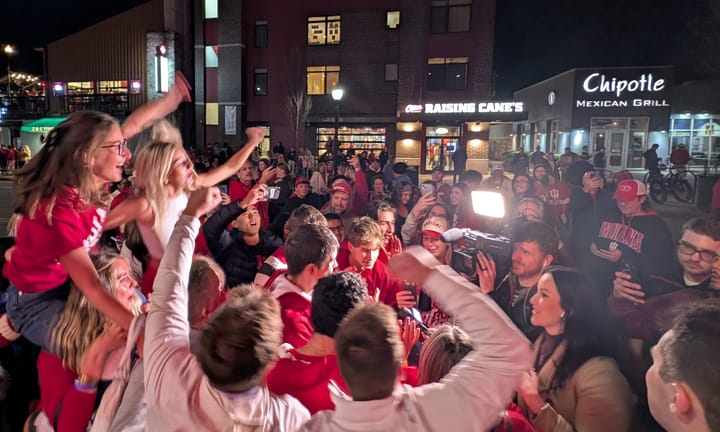
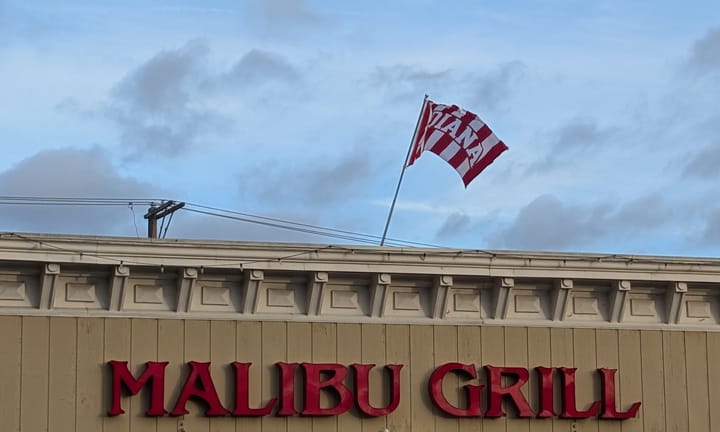
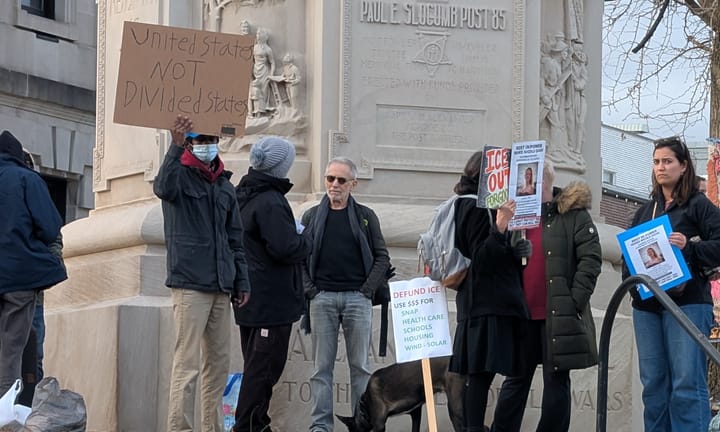
Comments ()